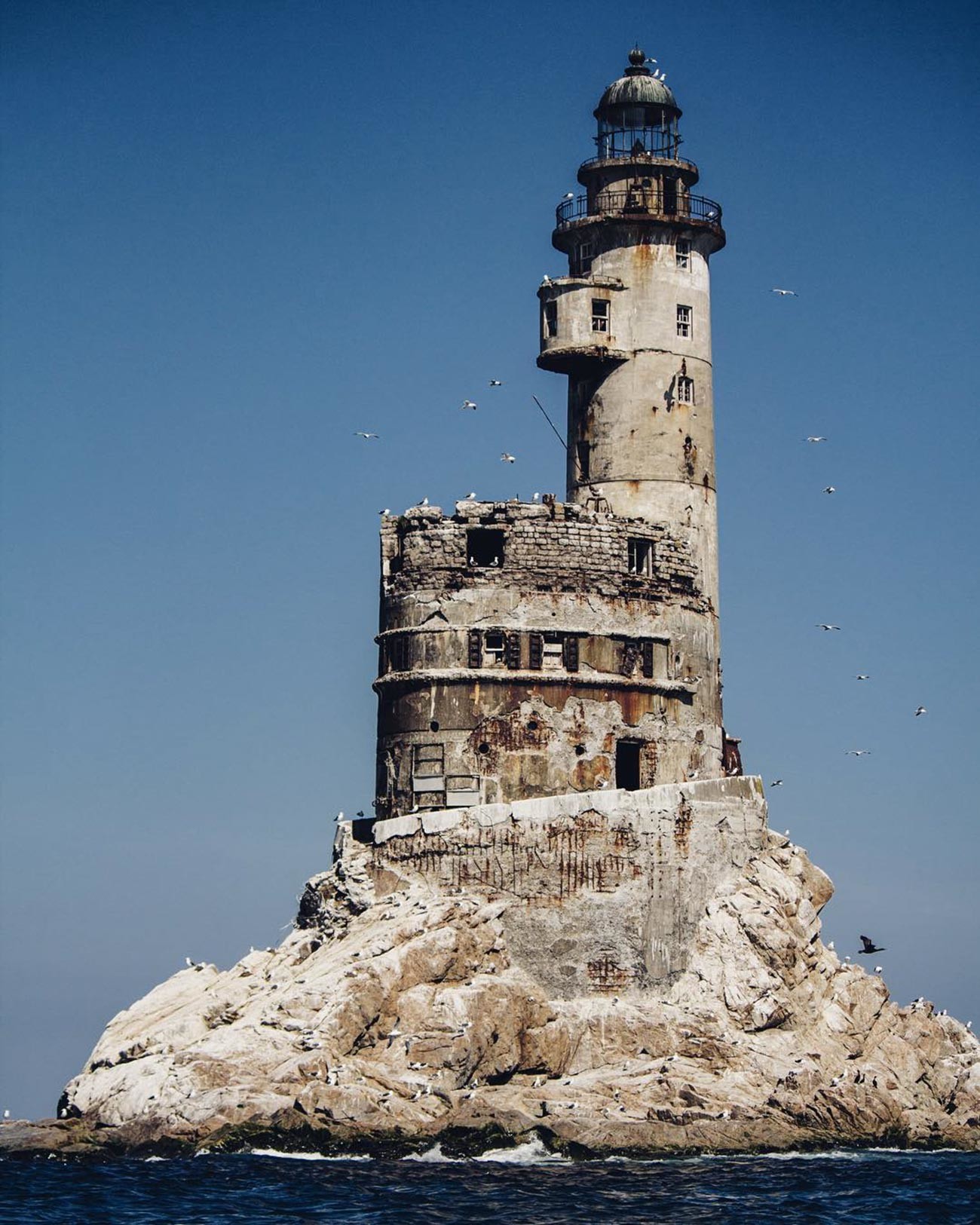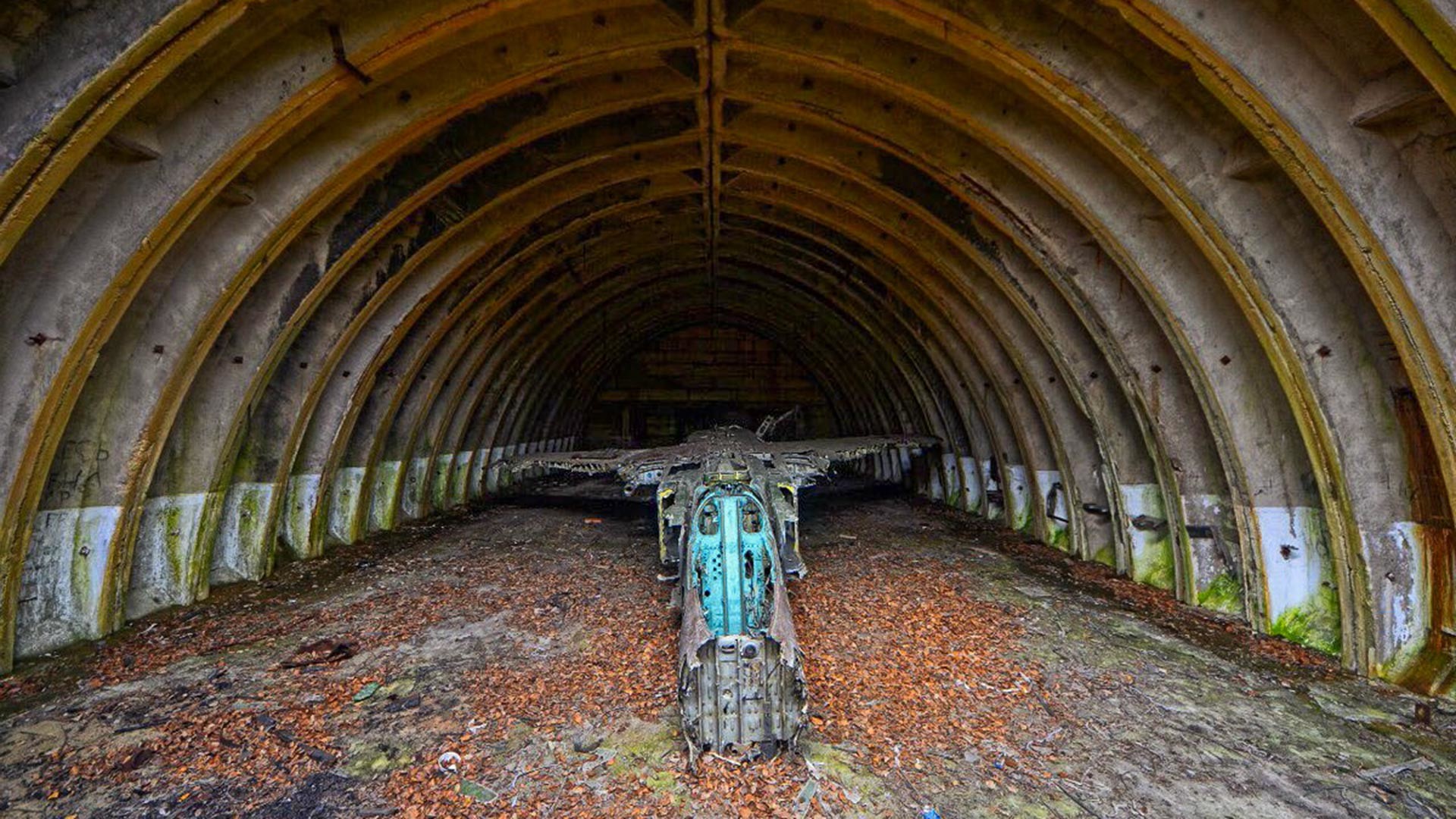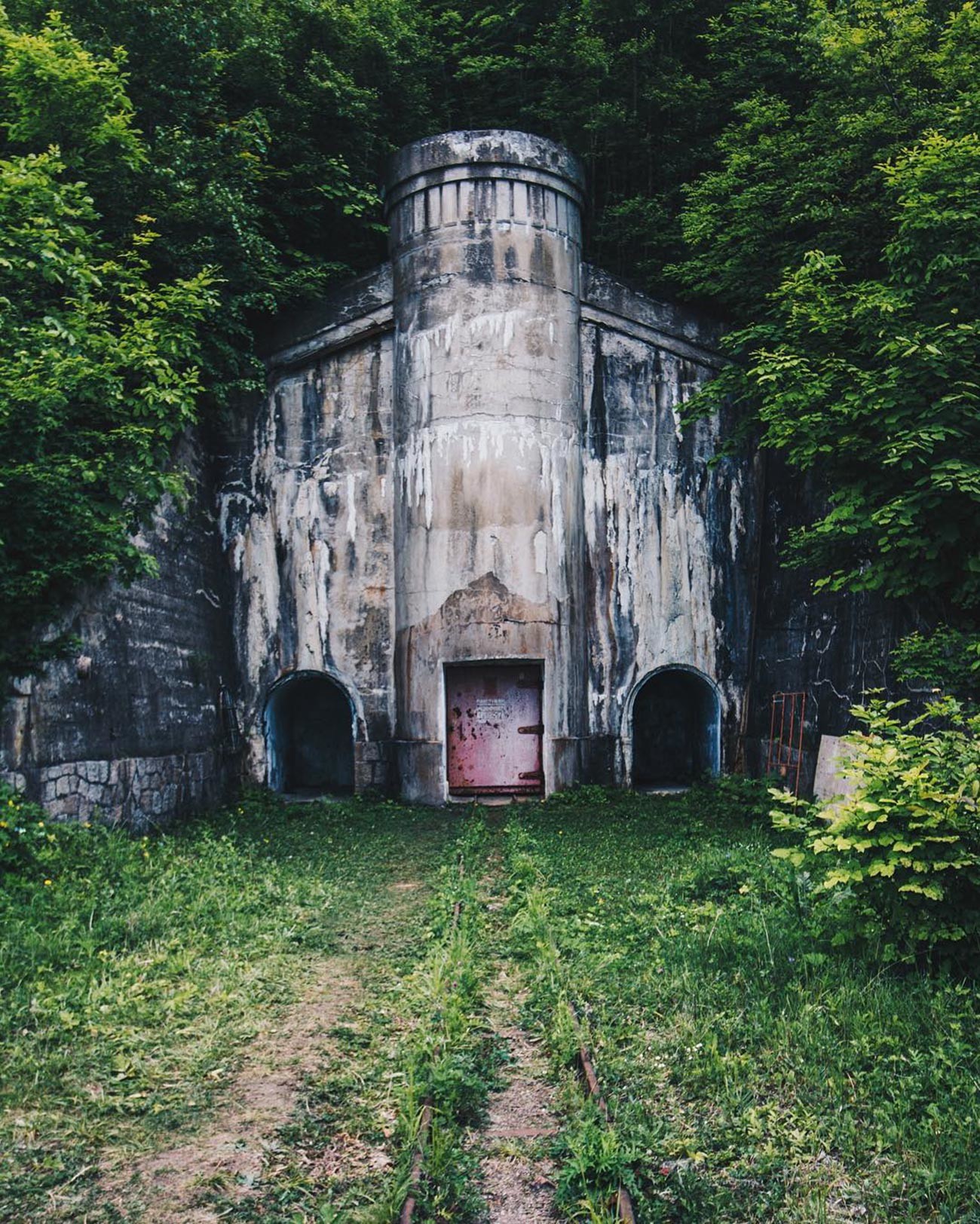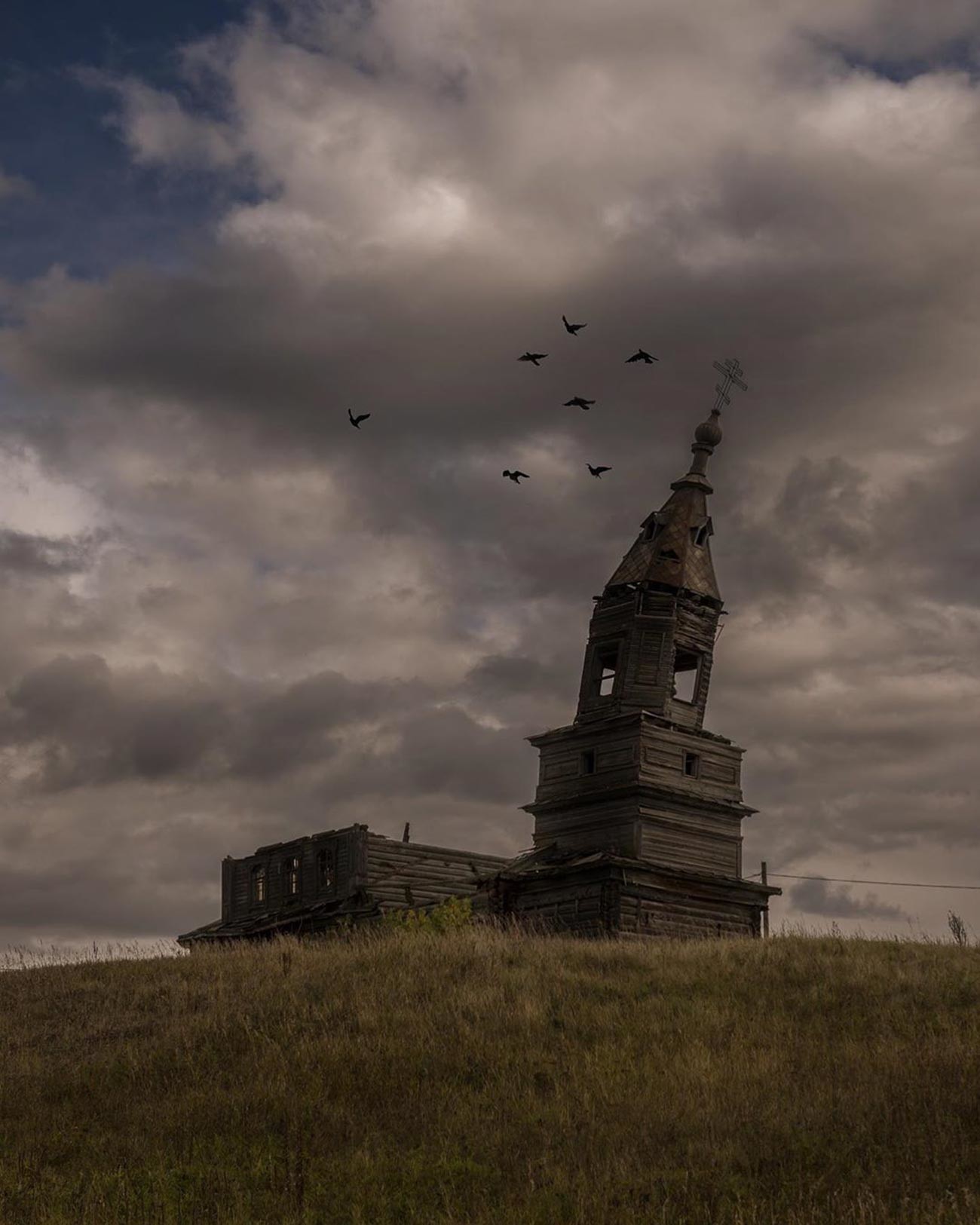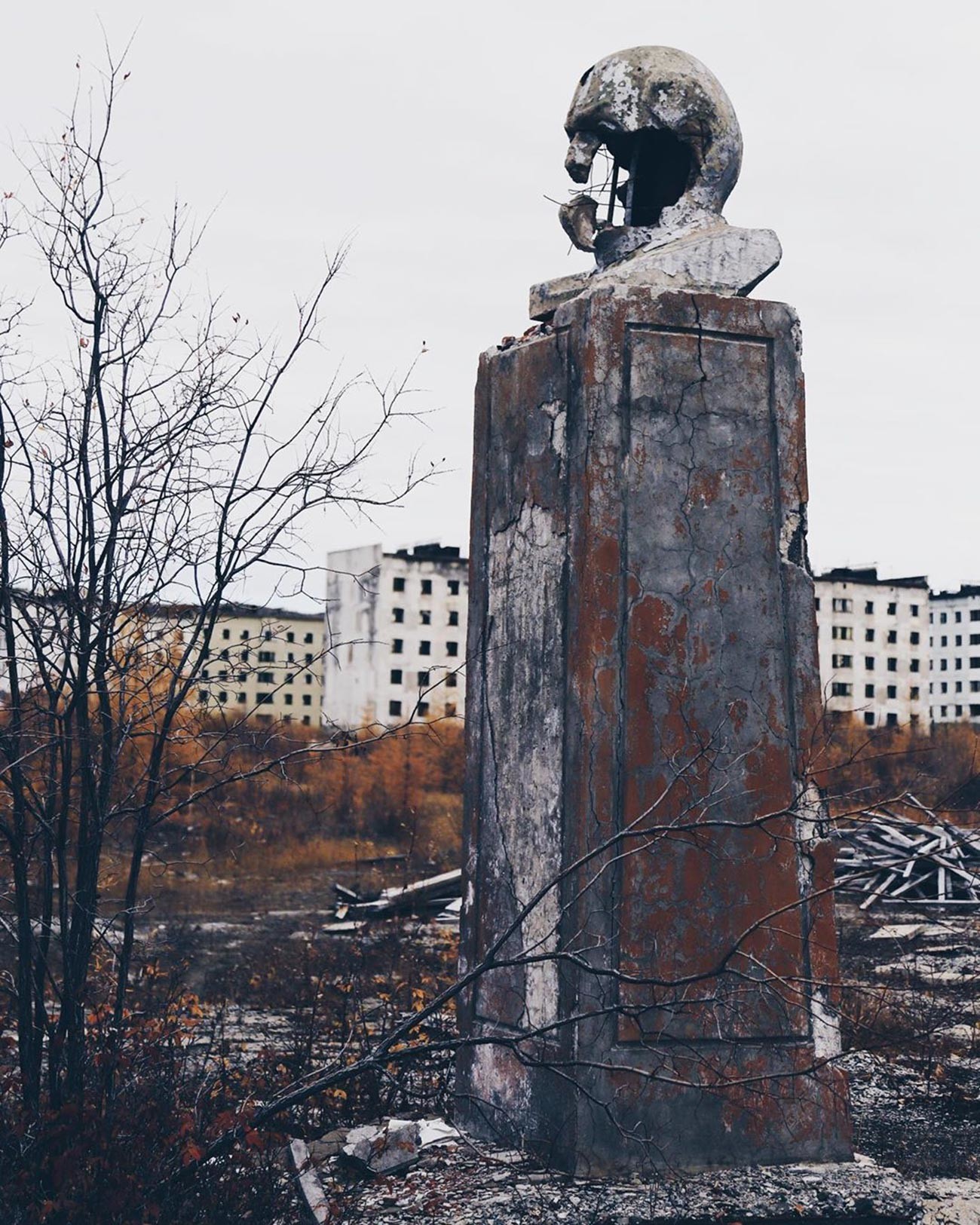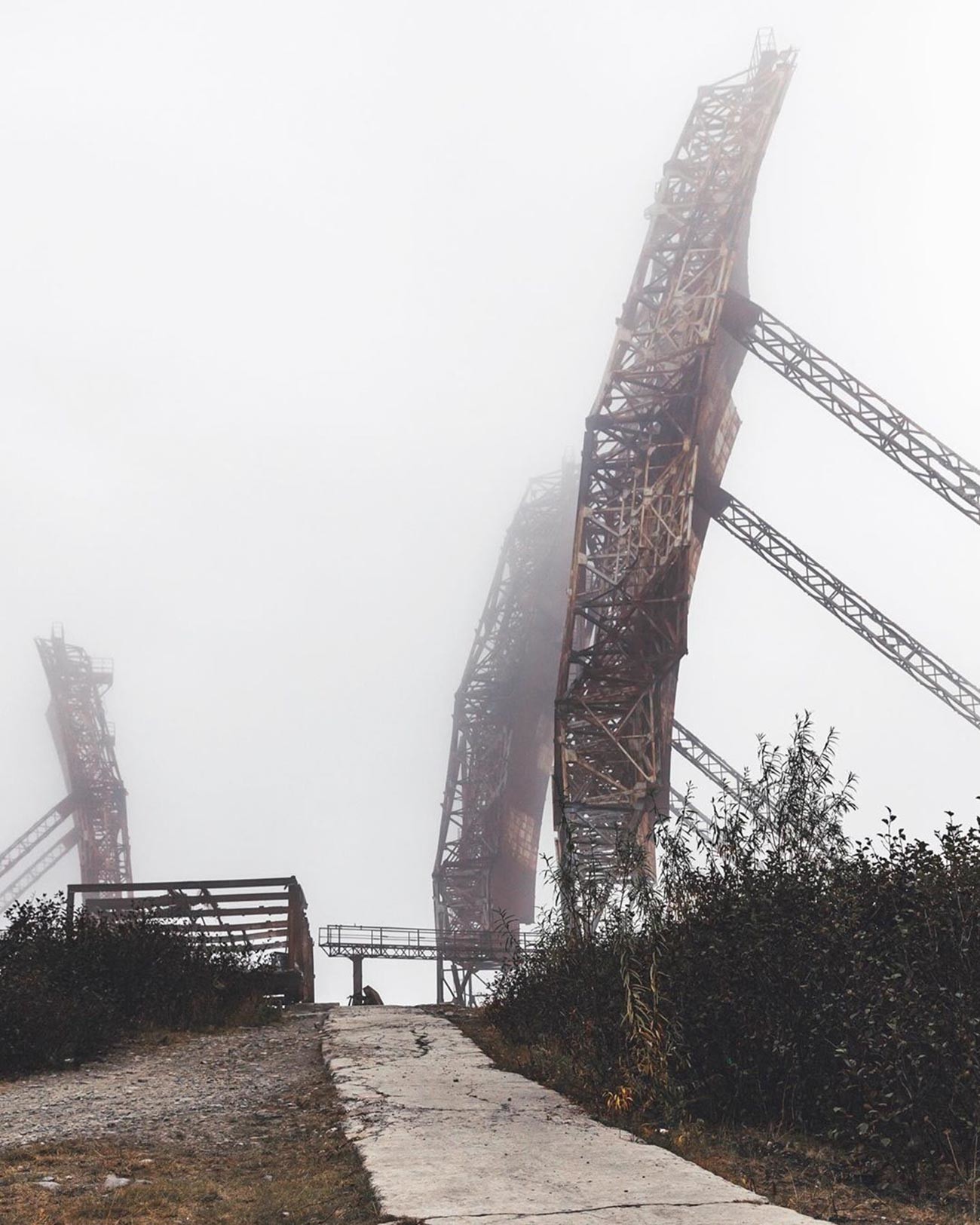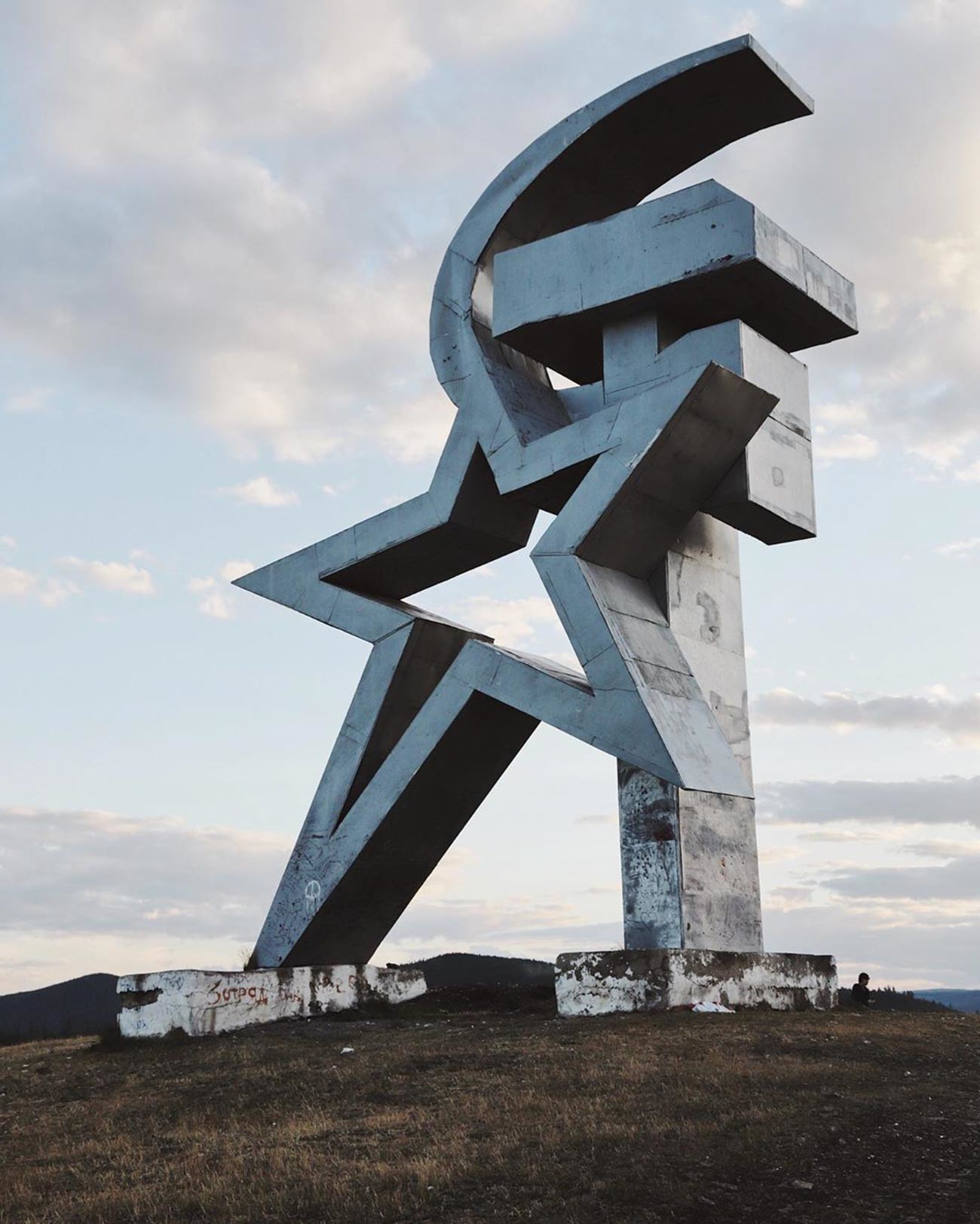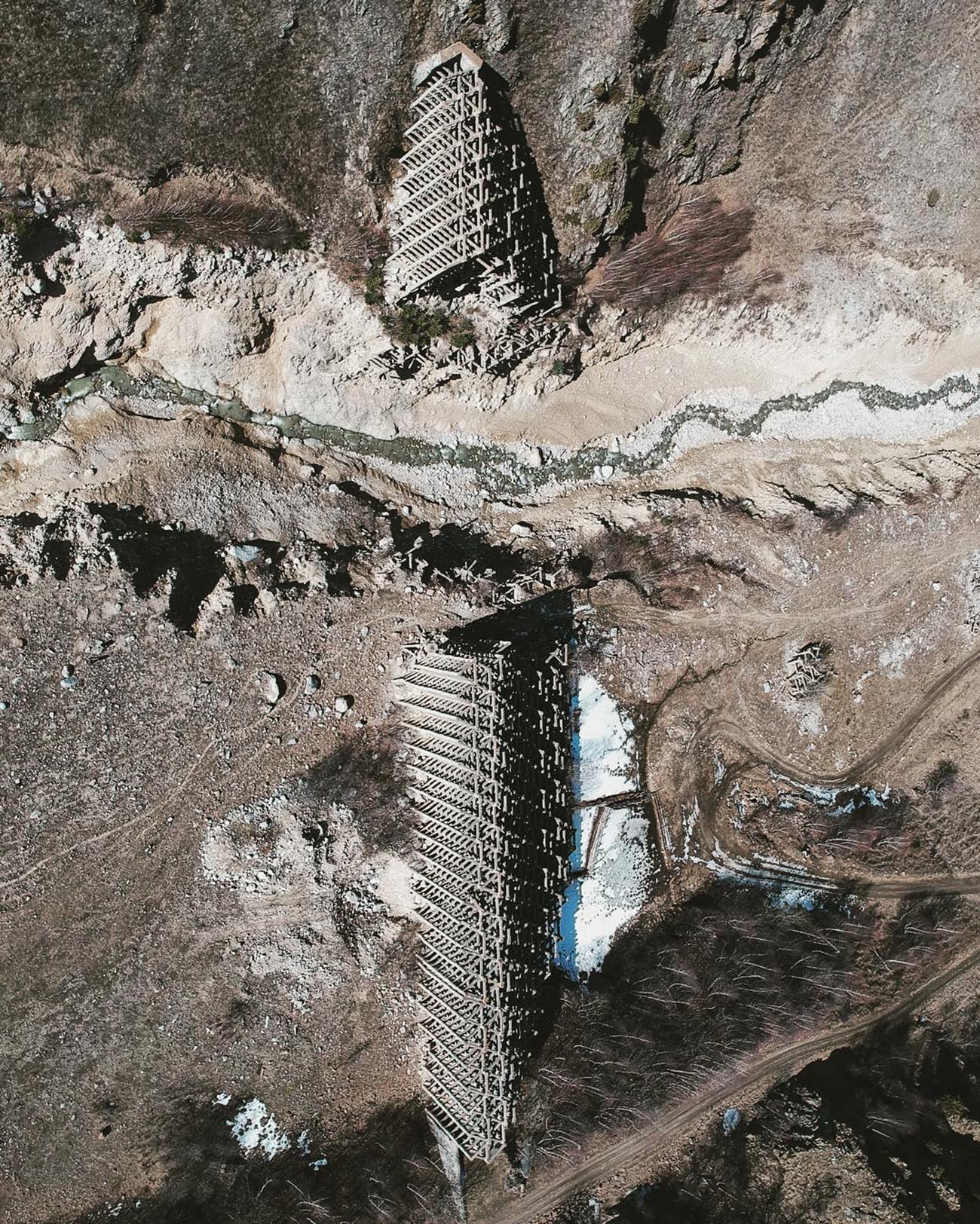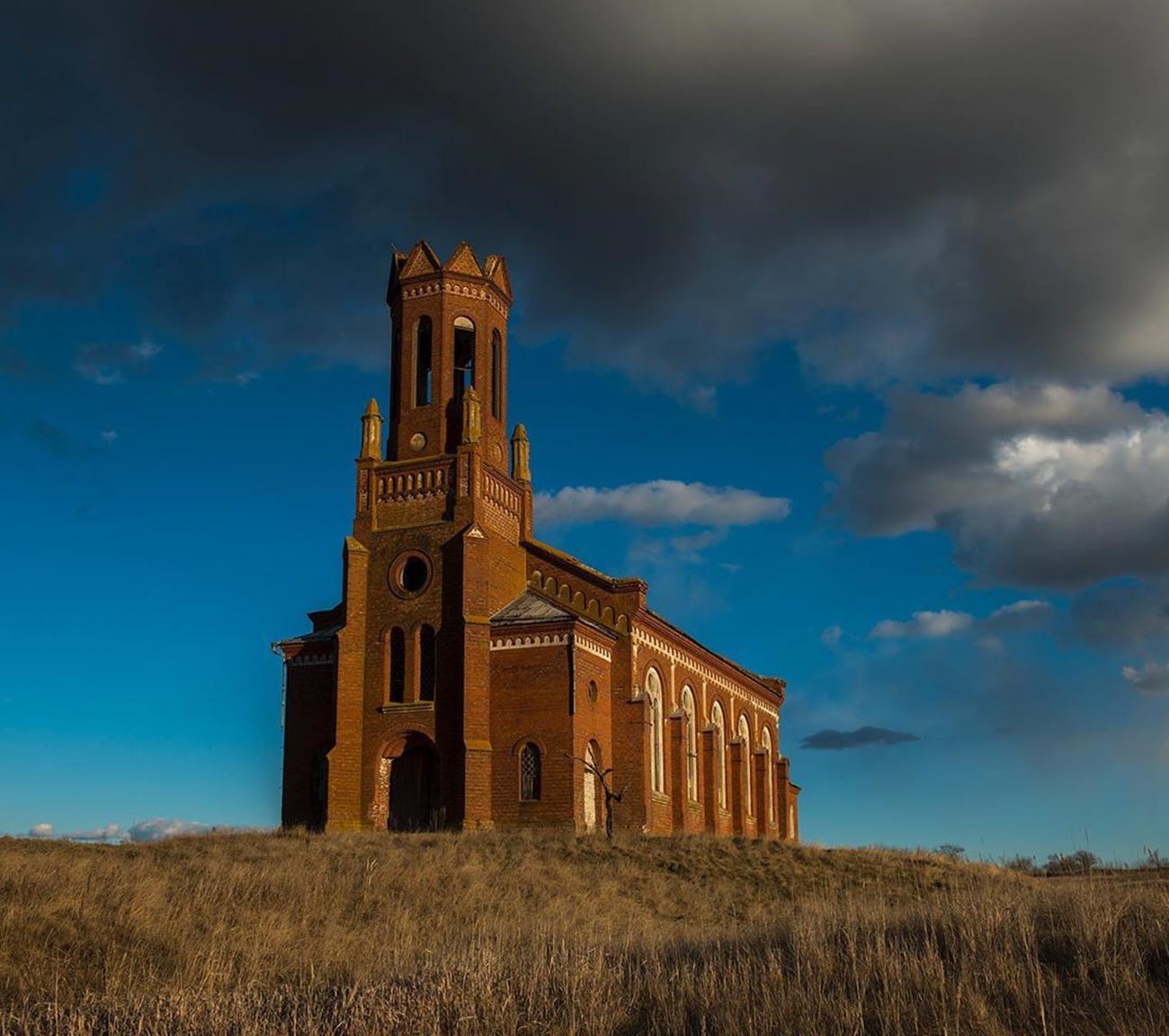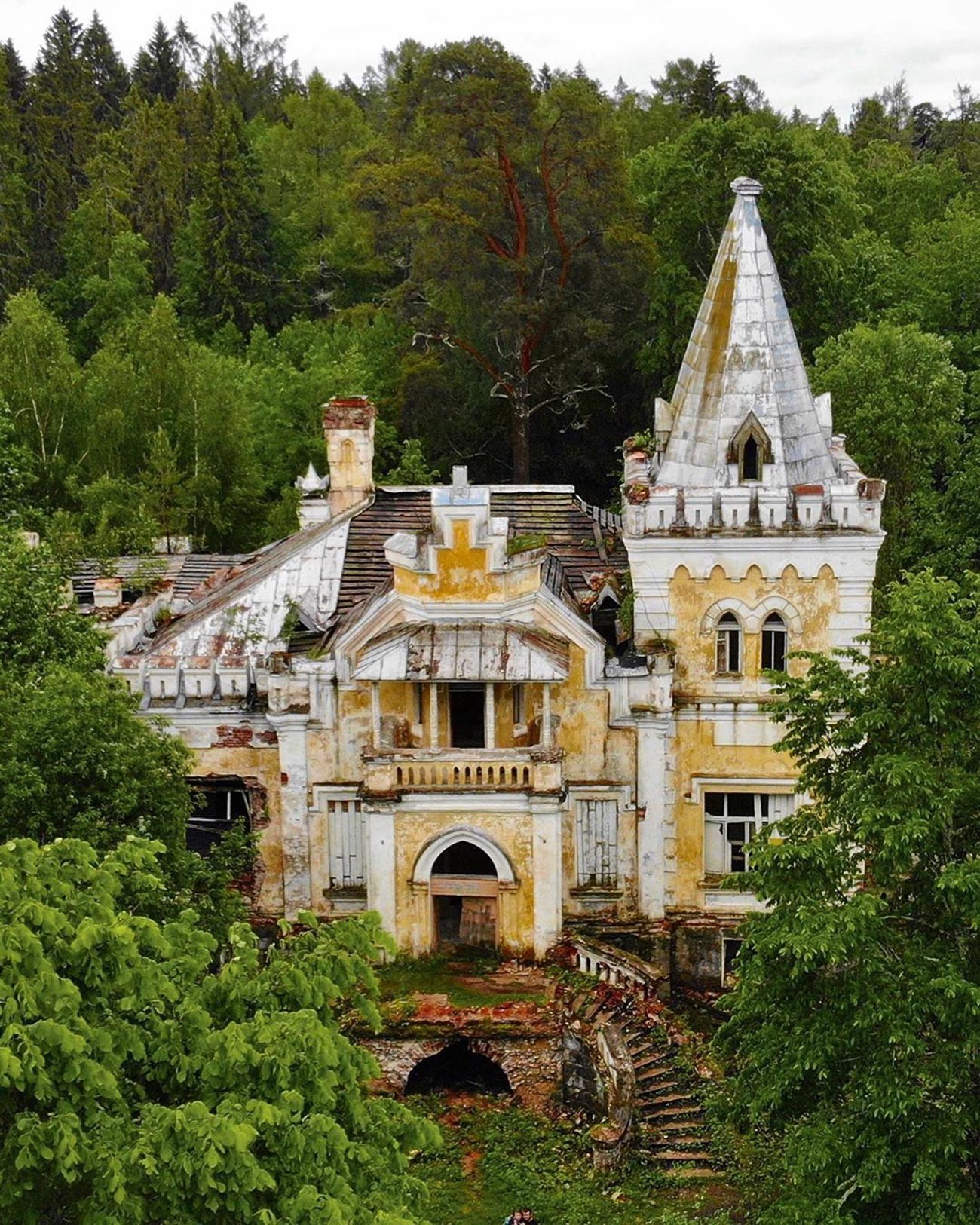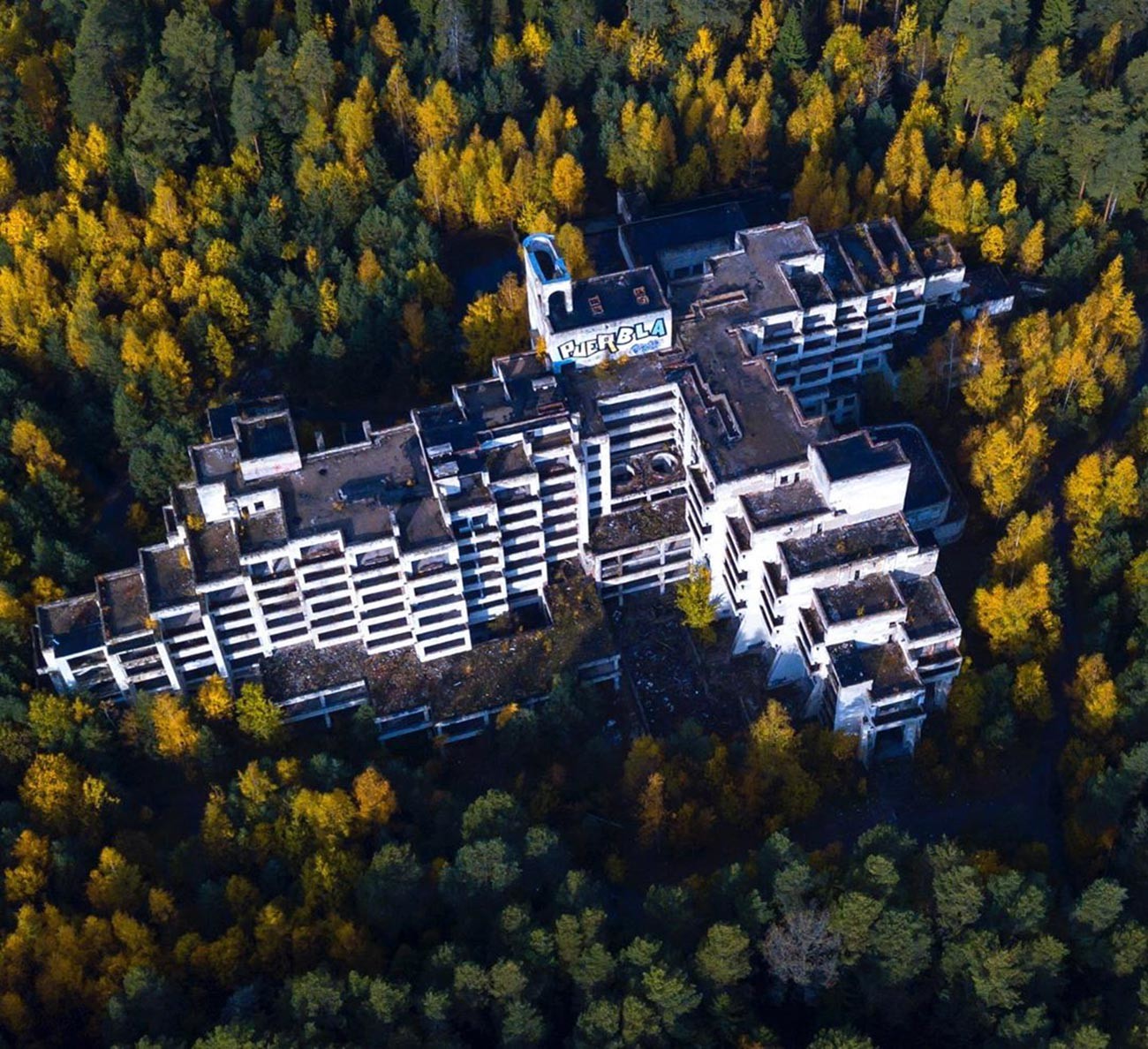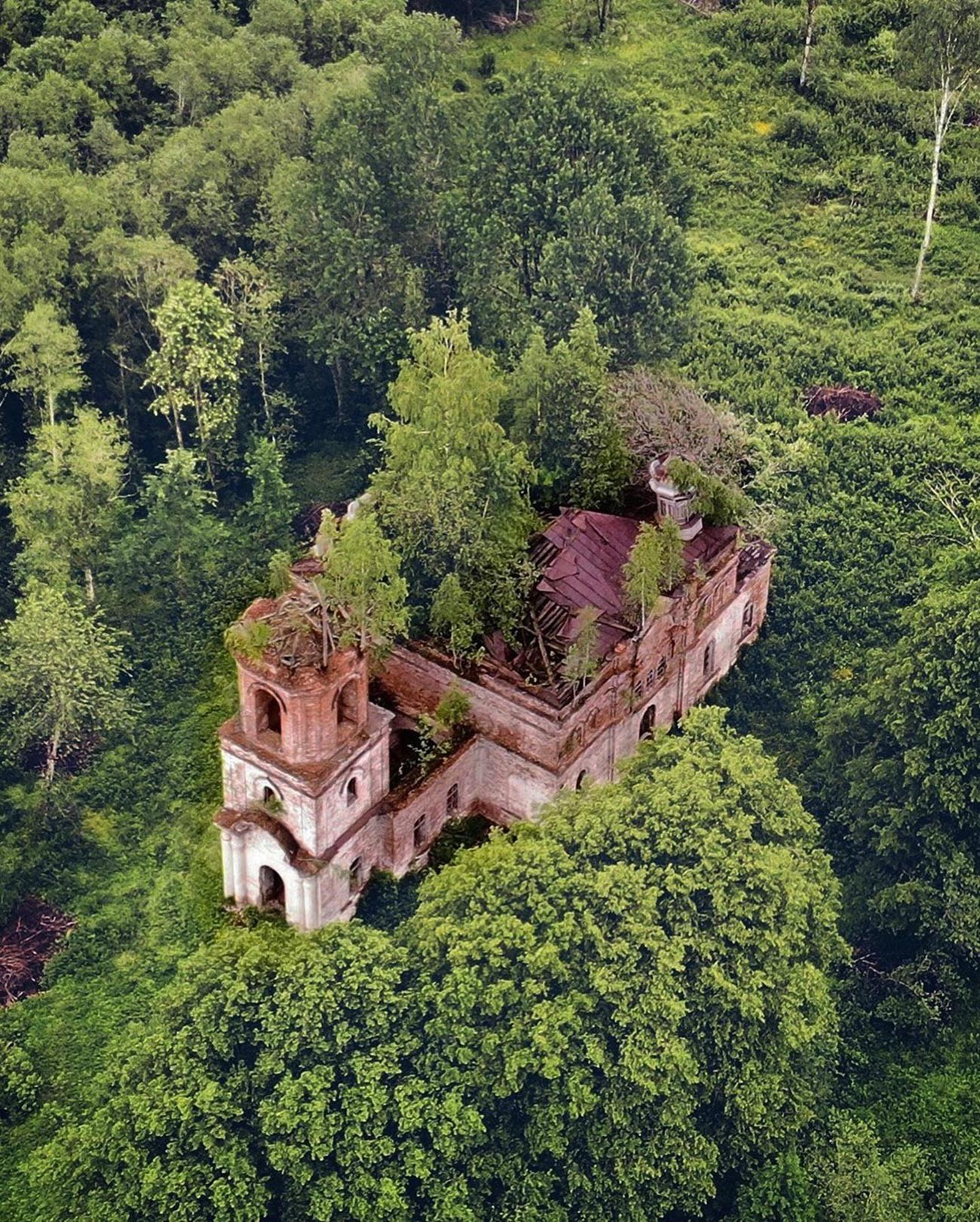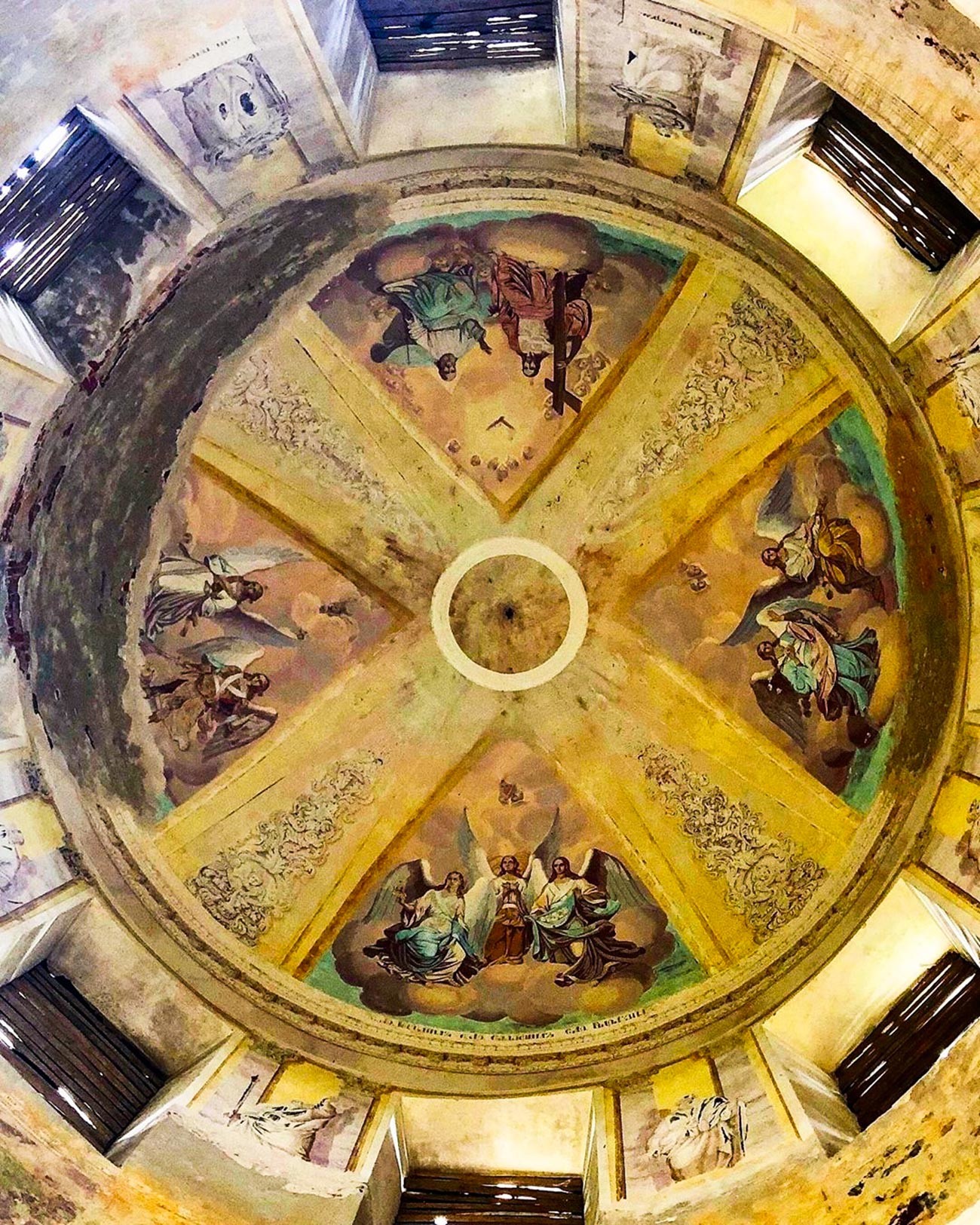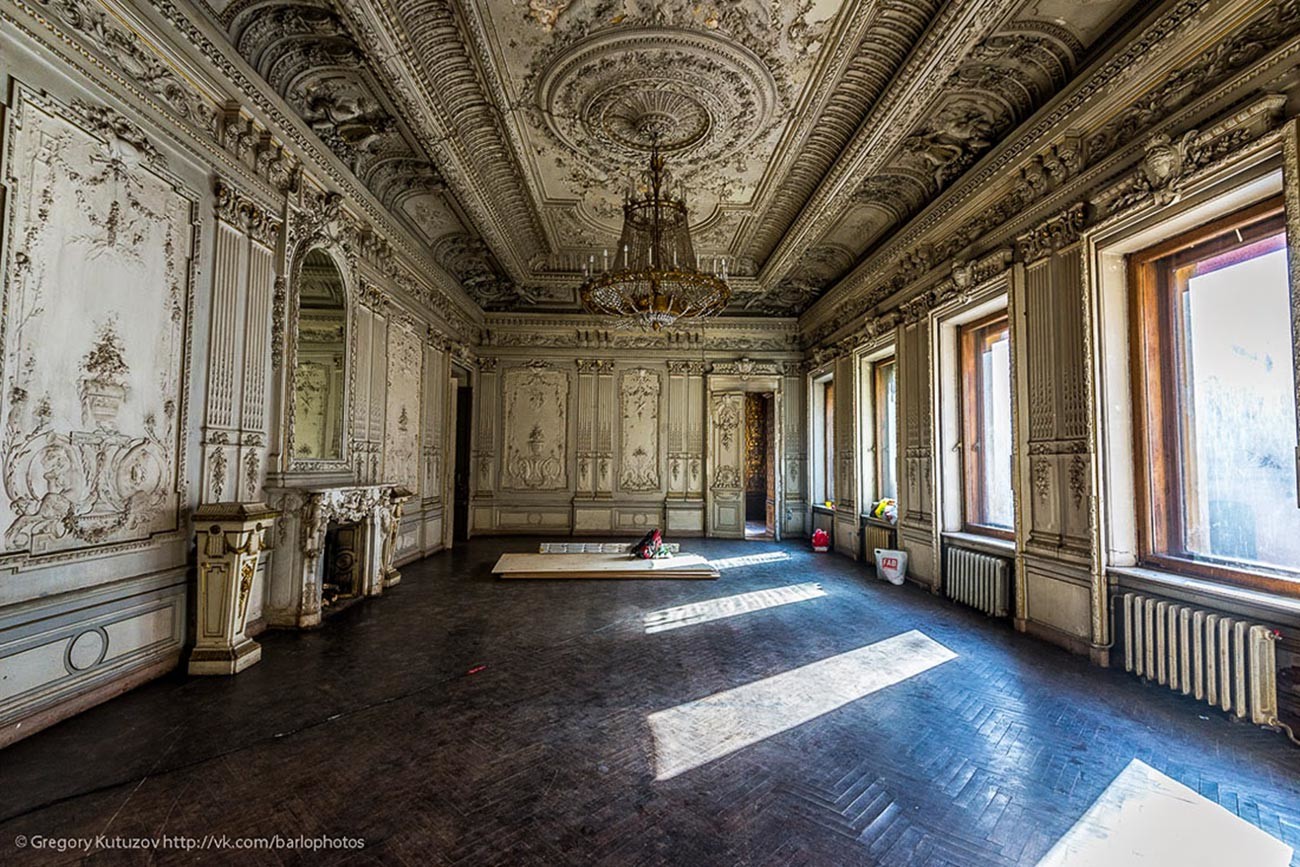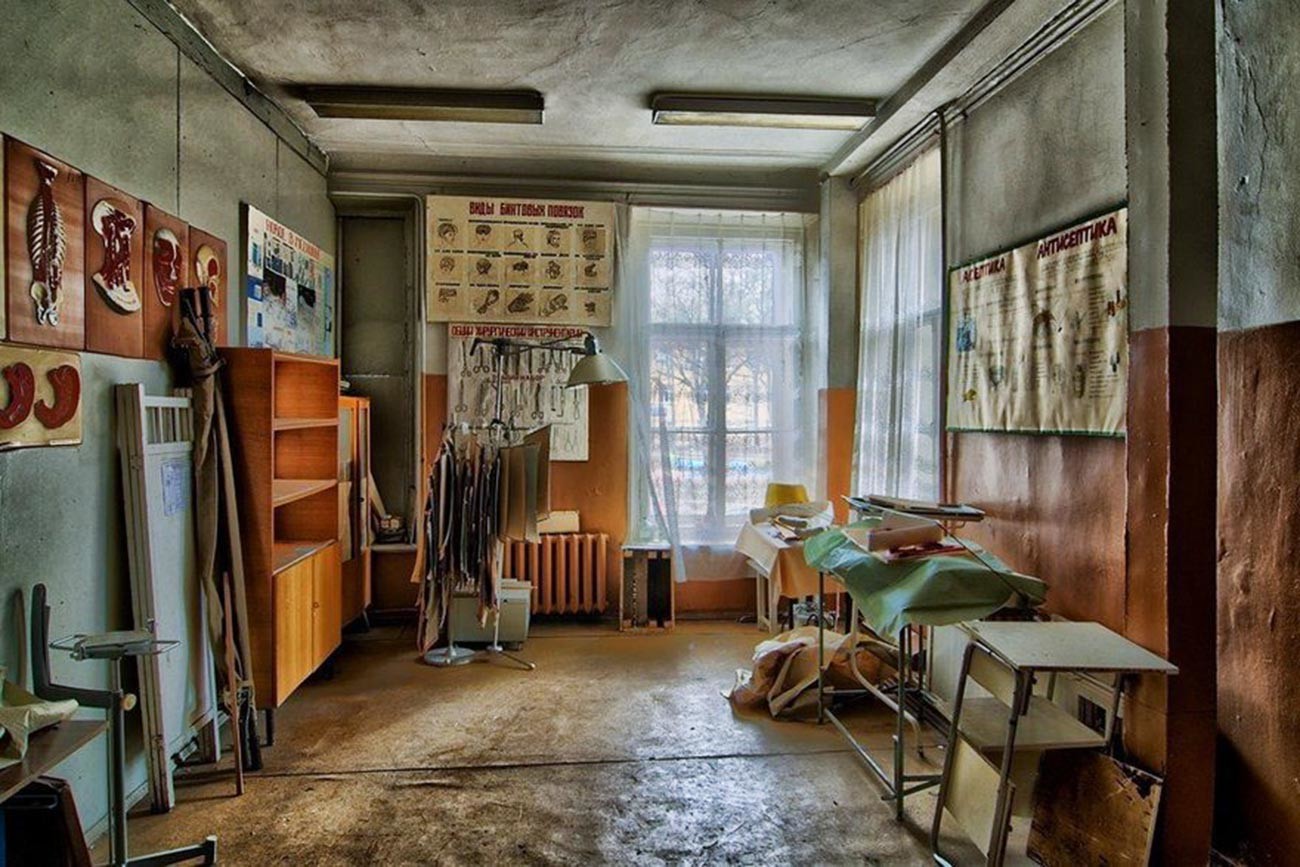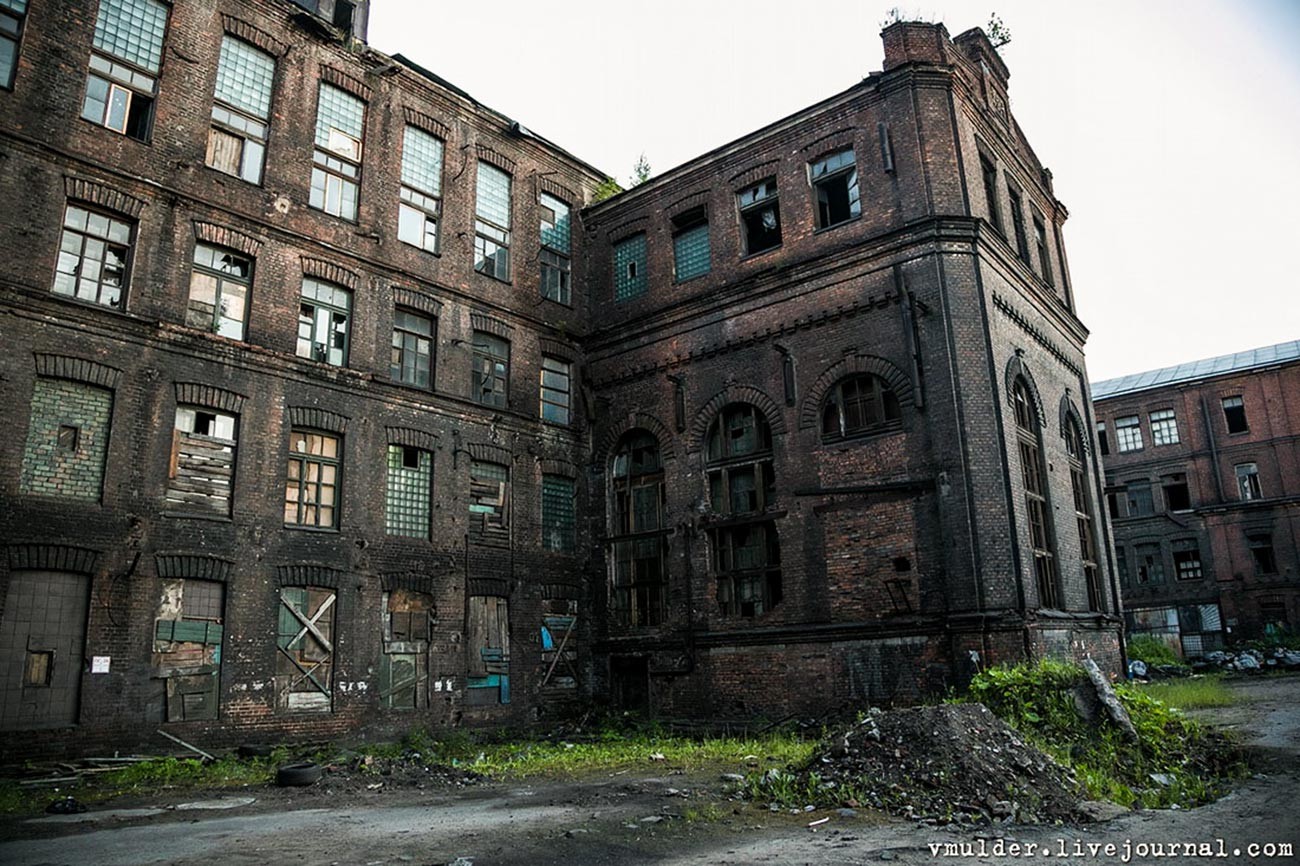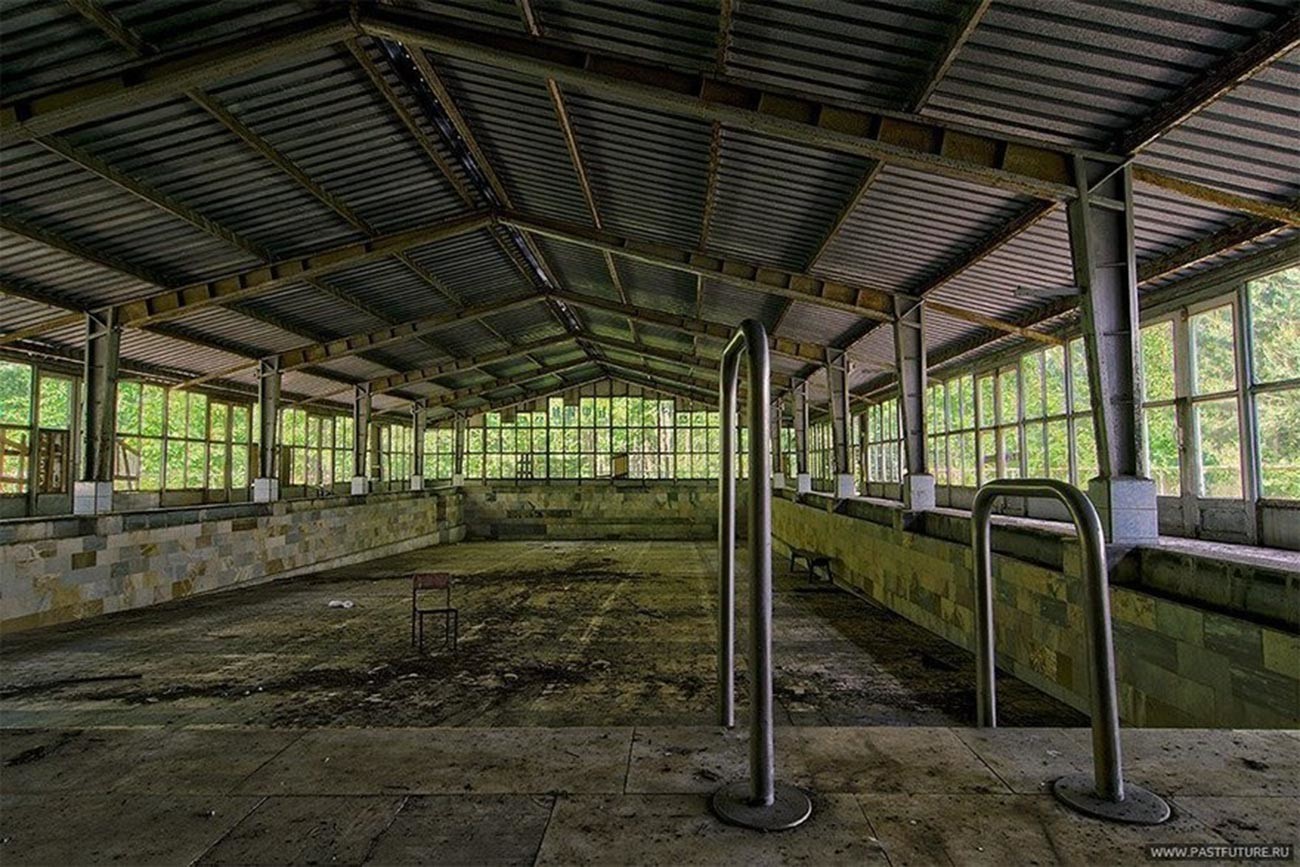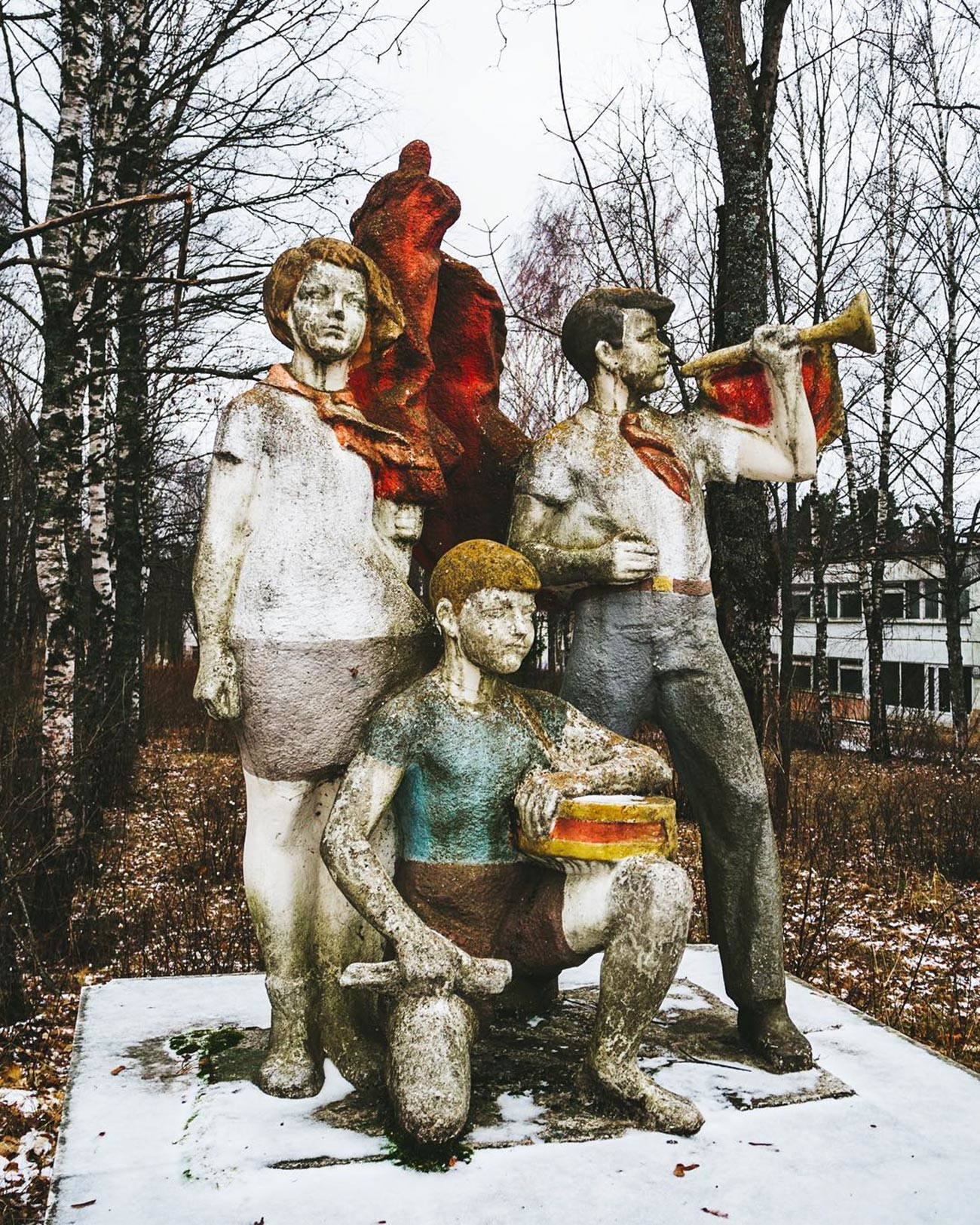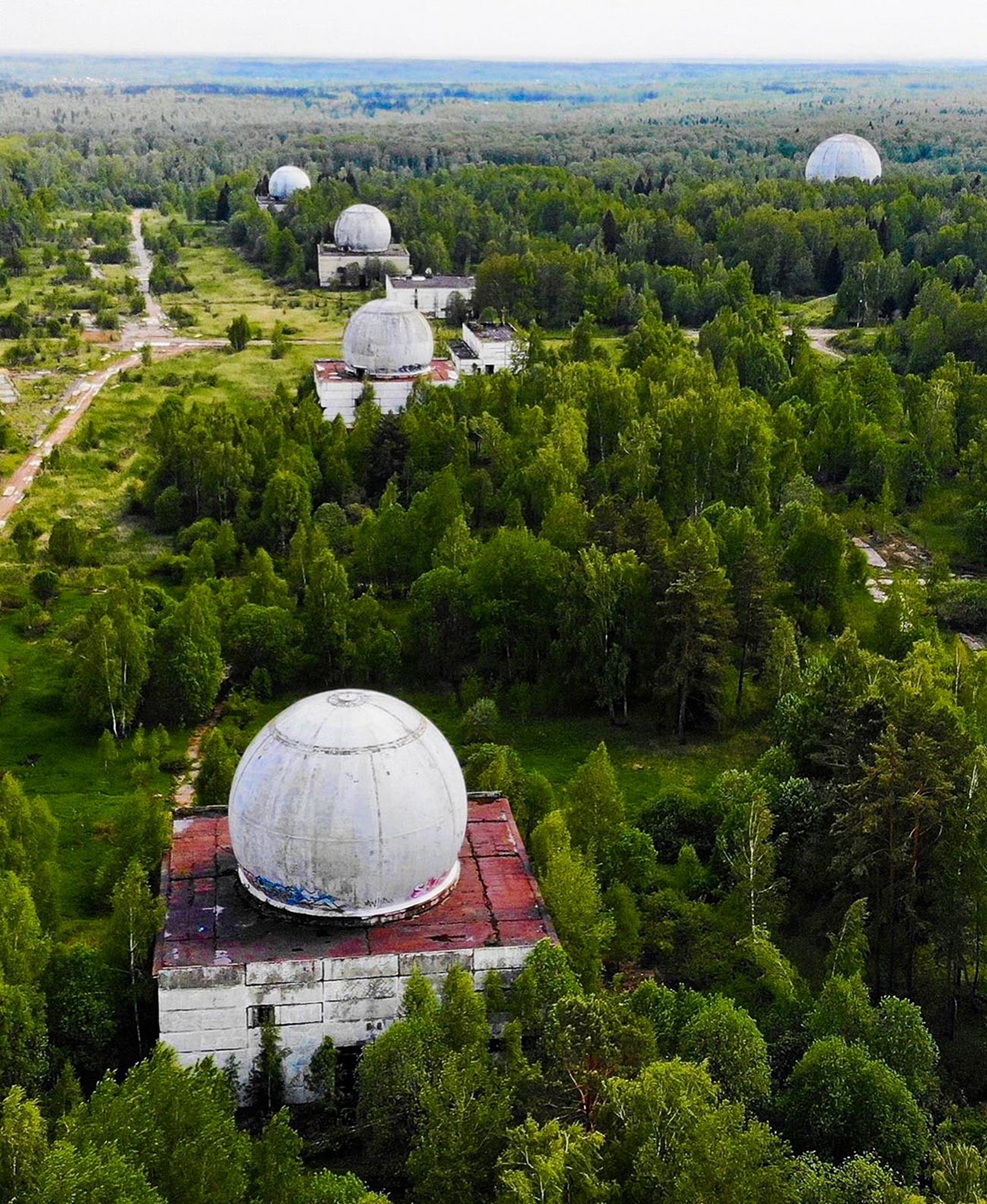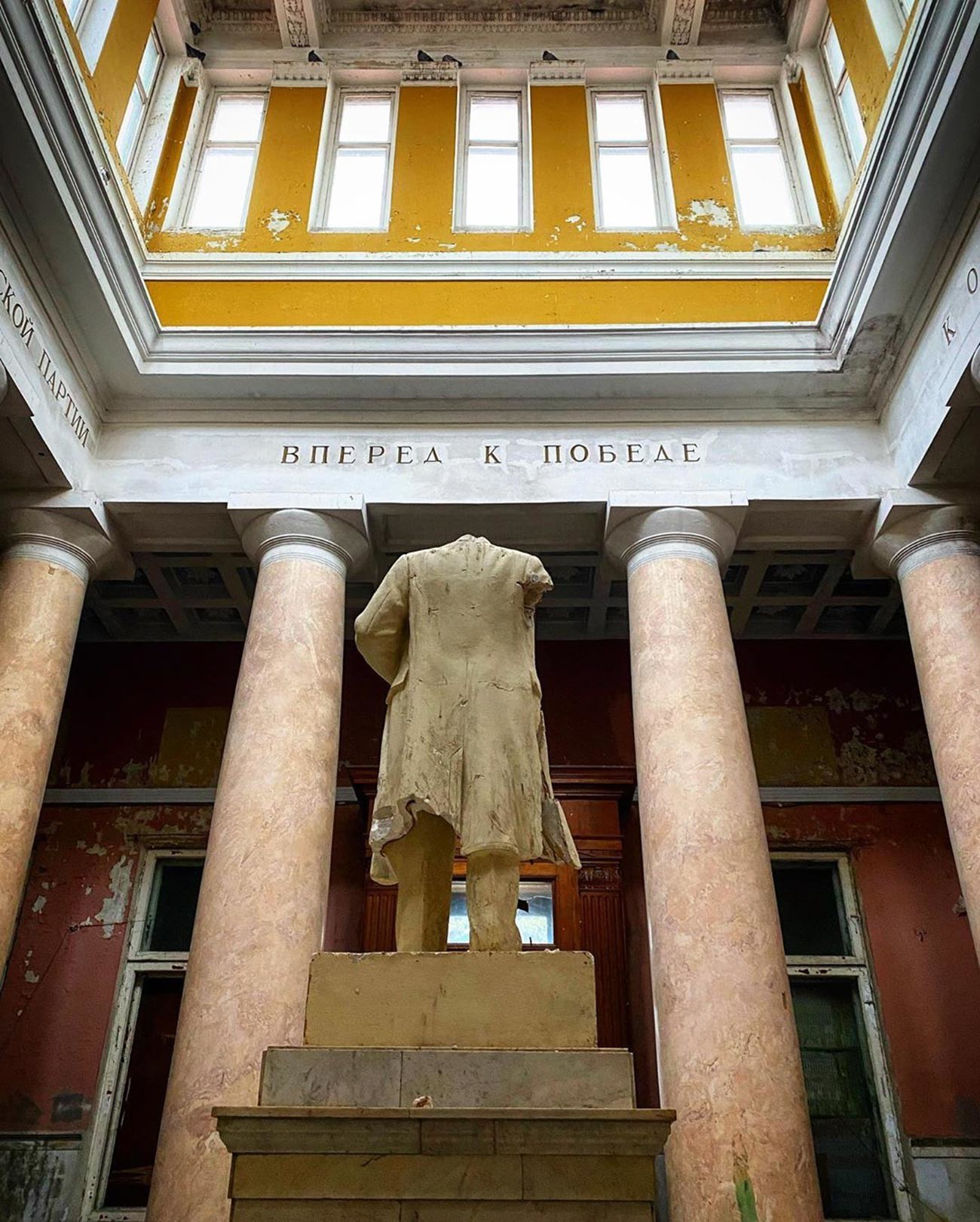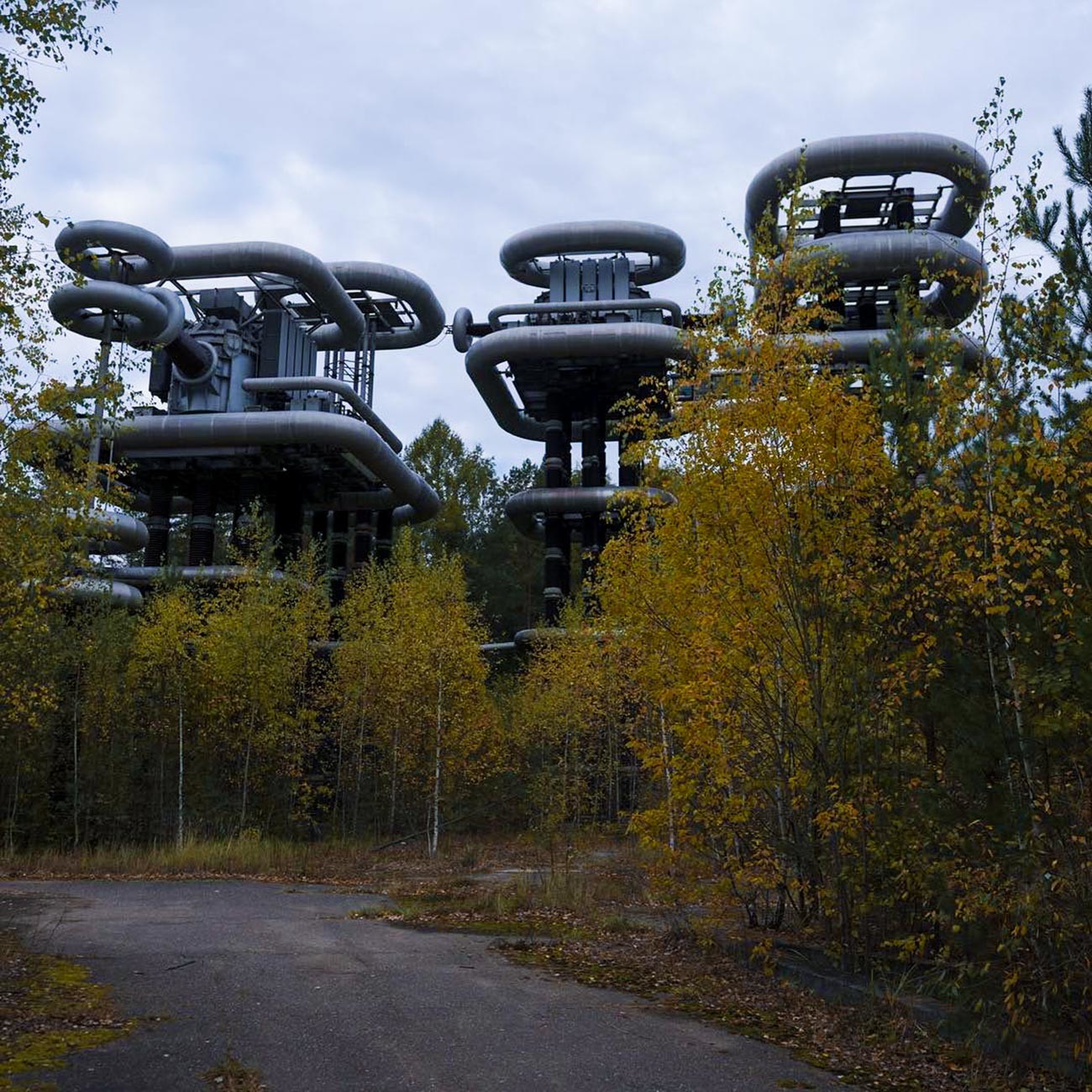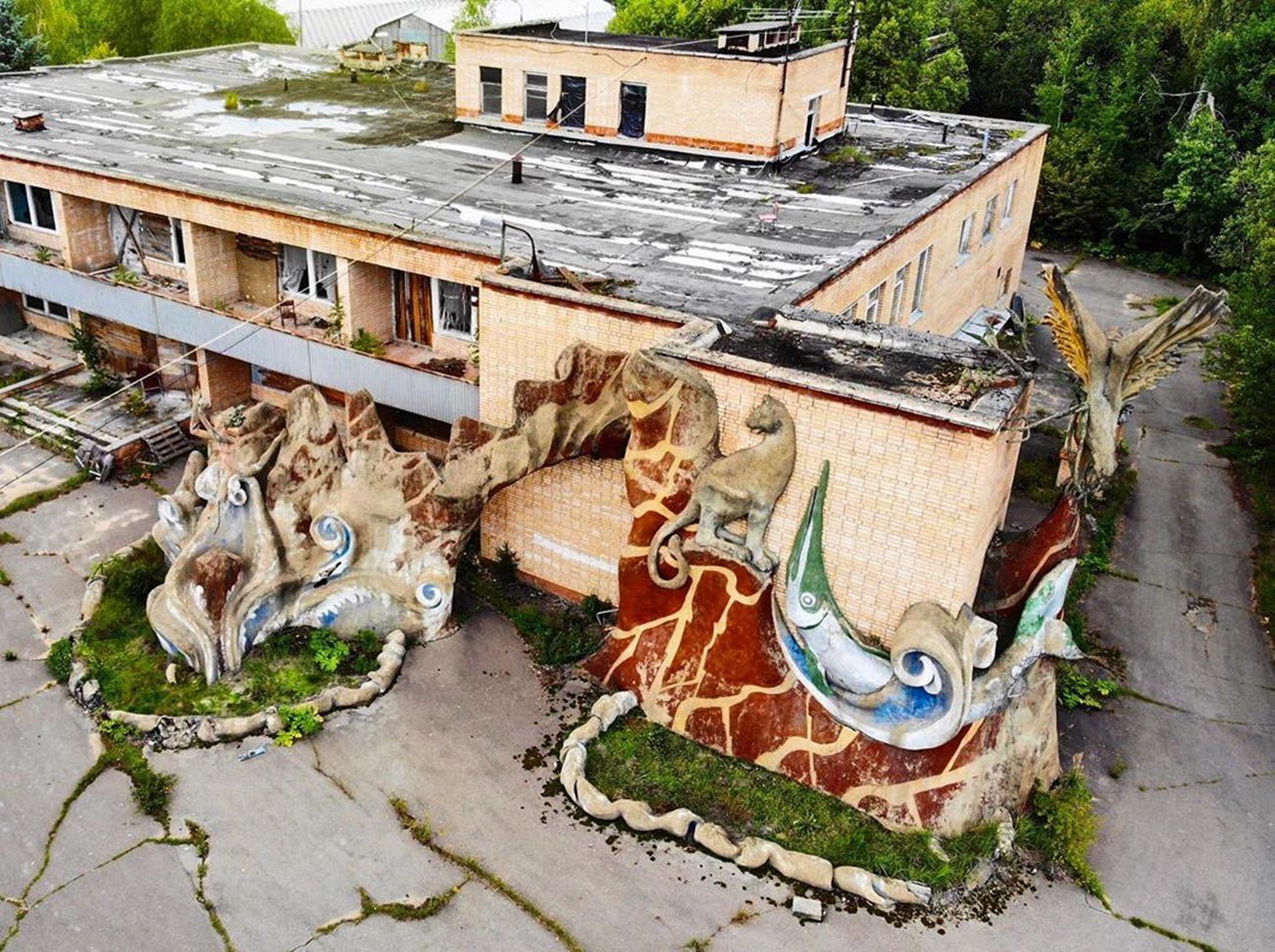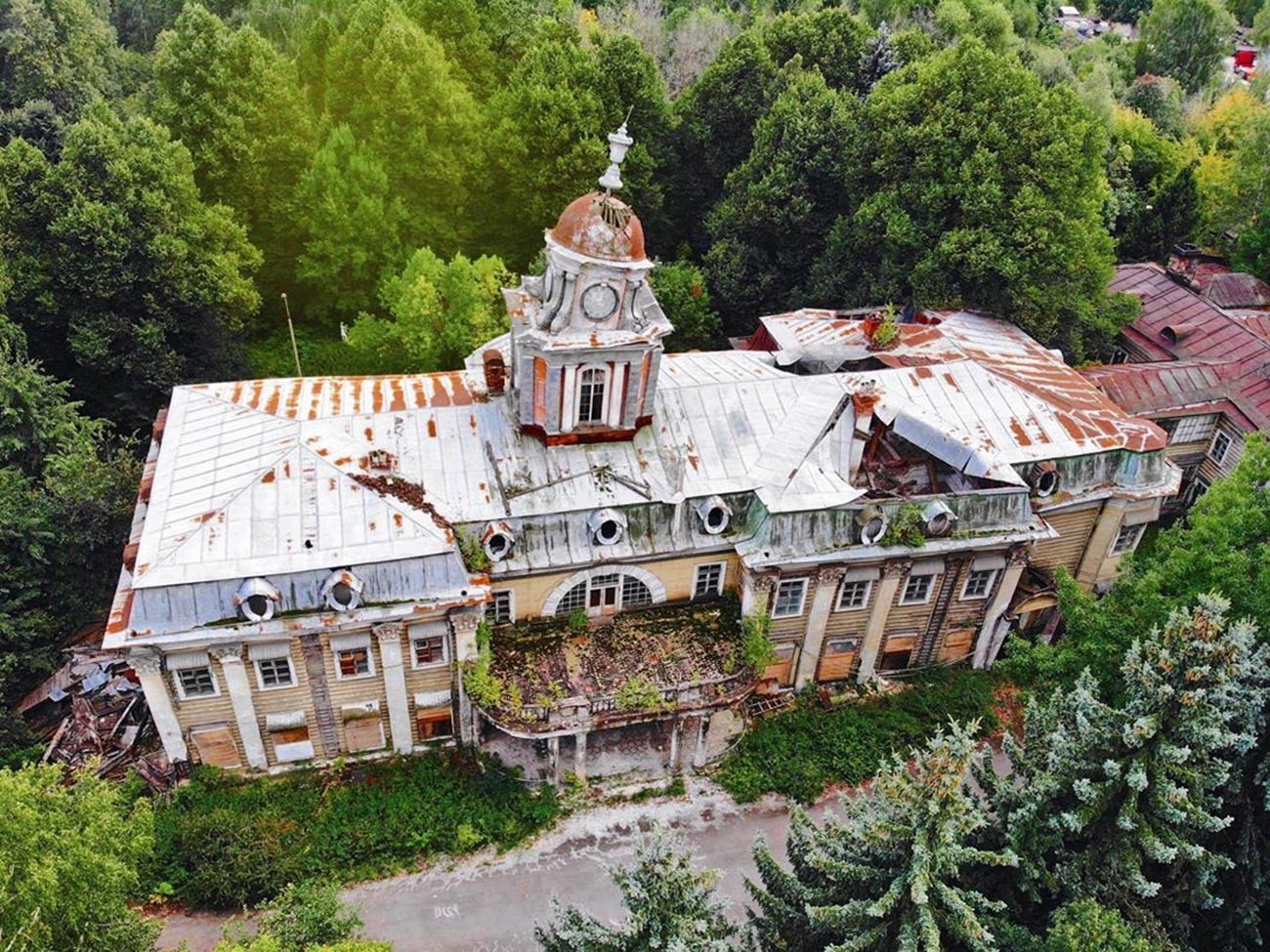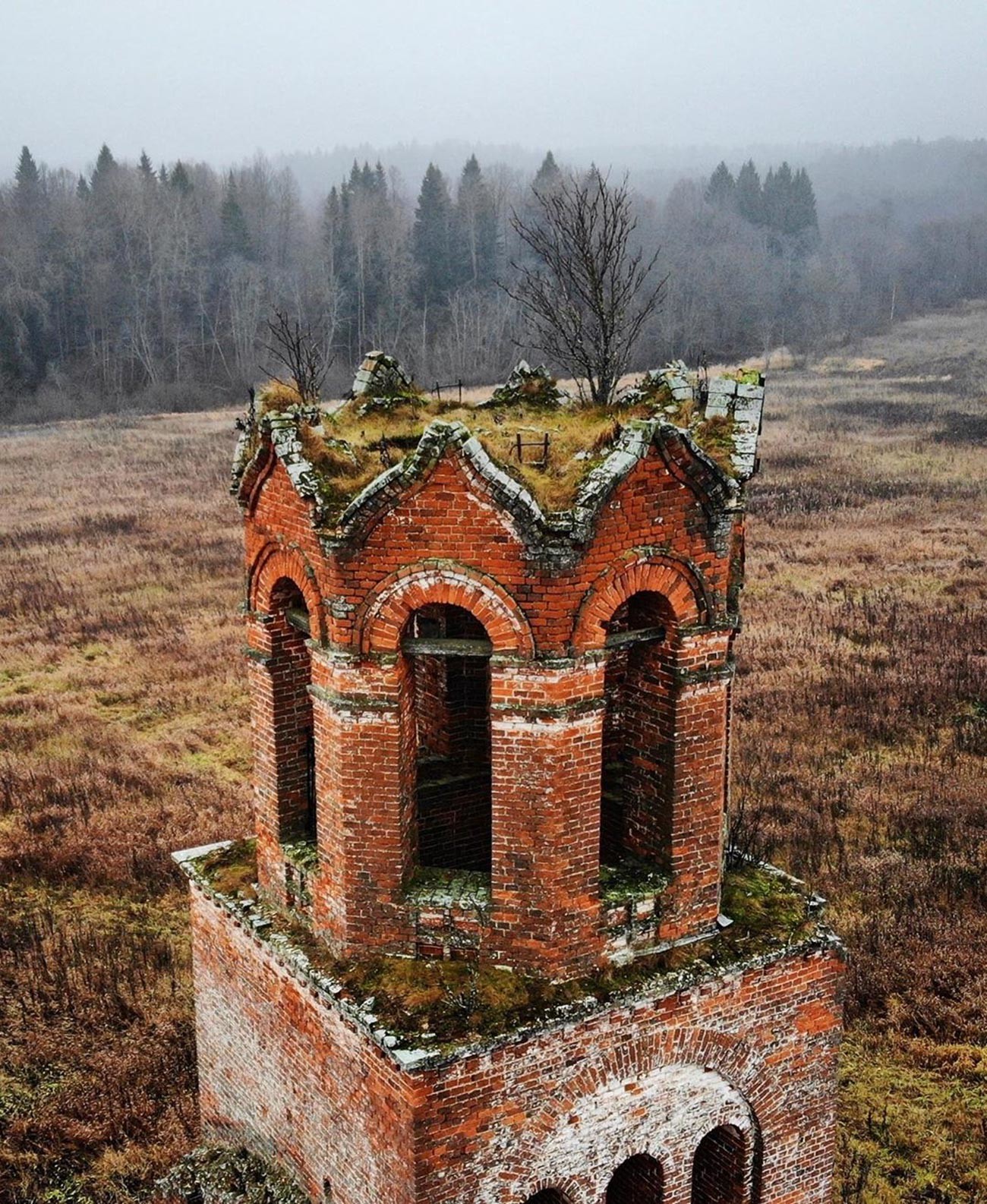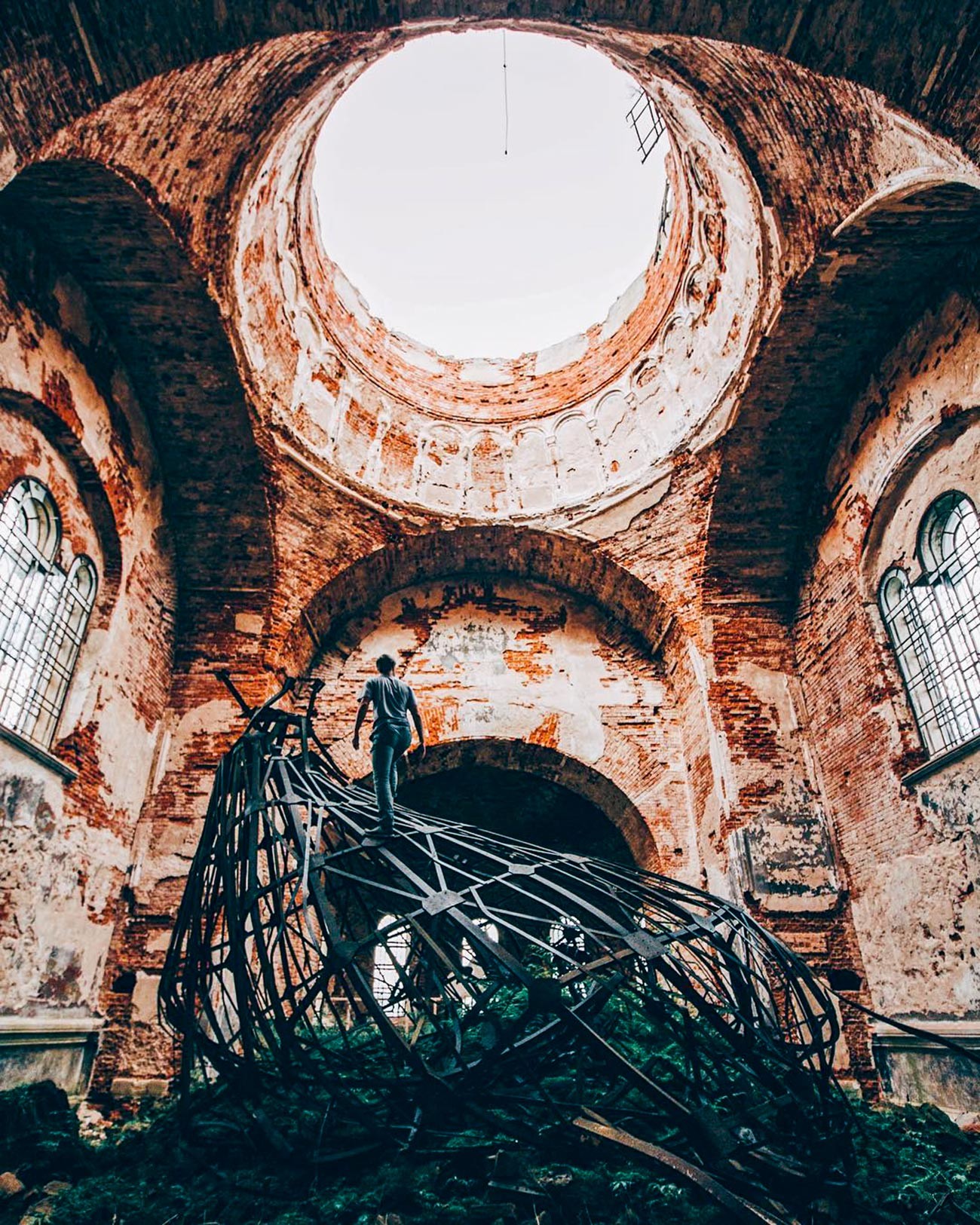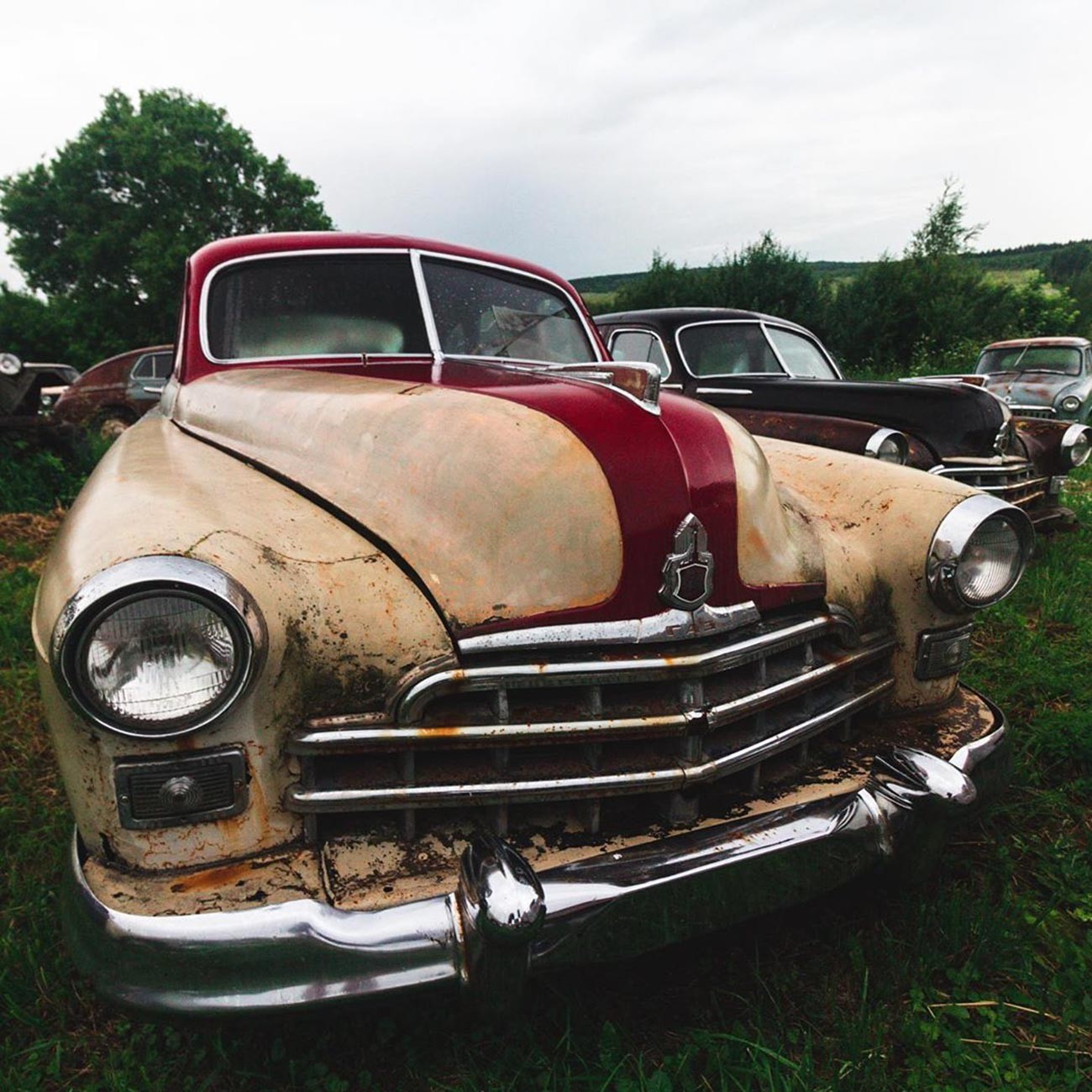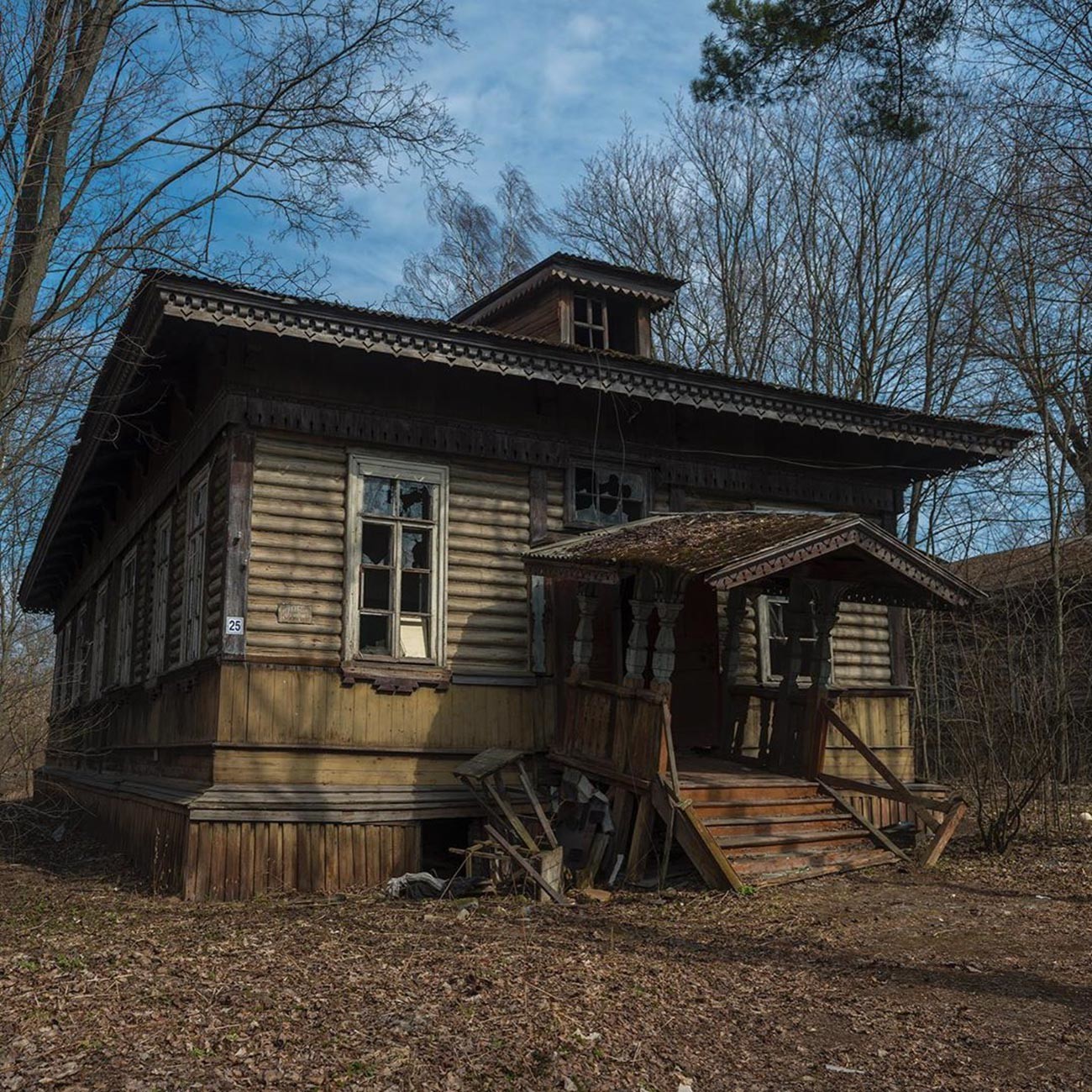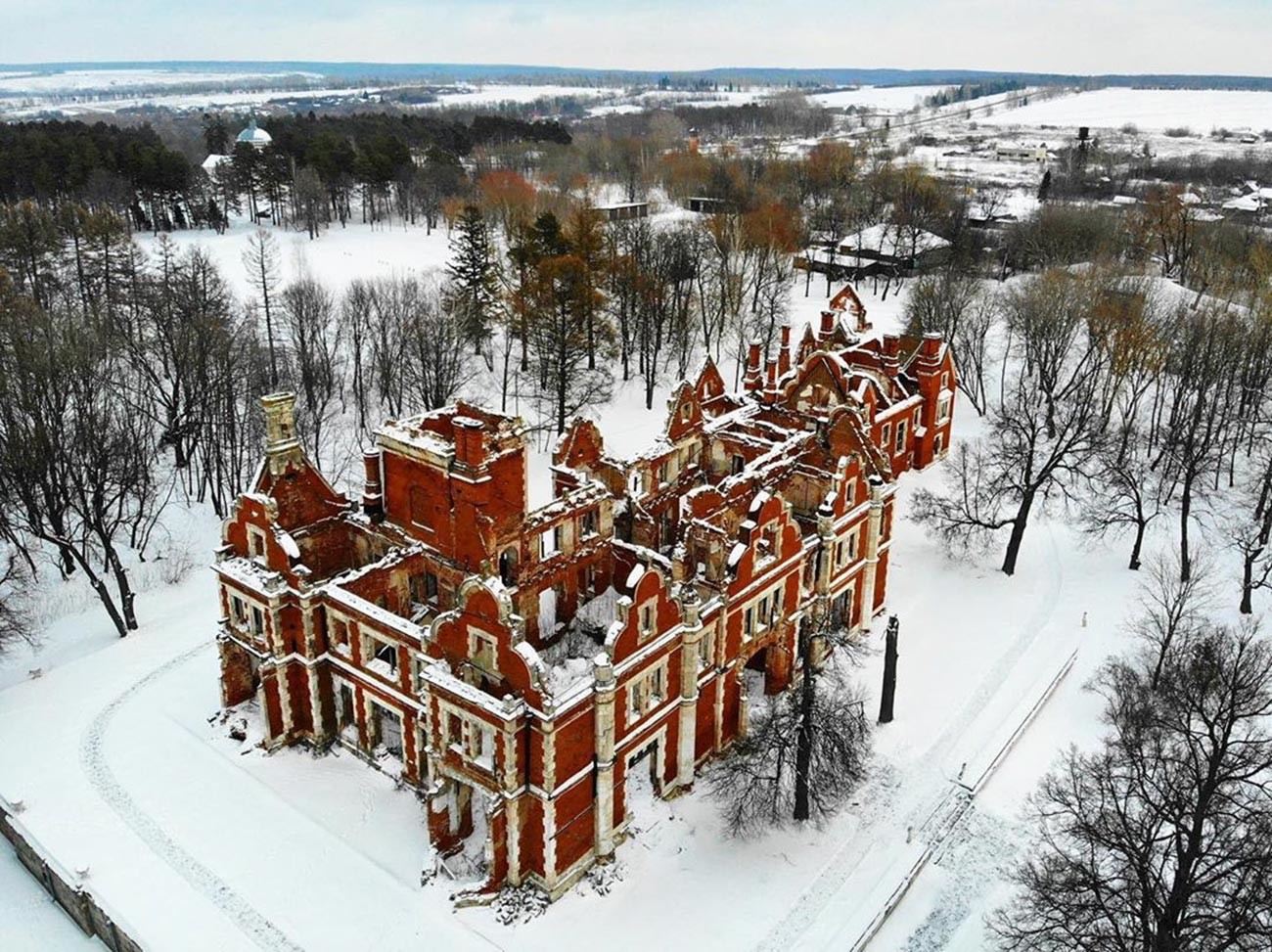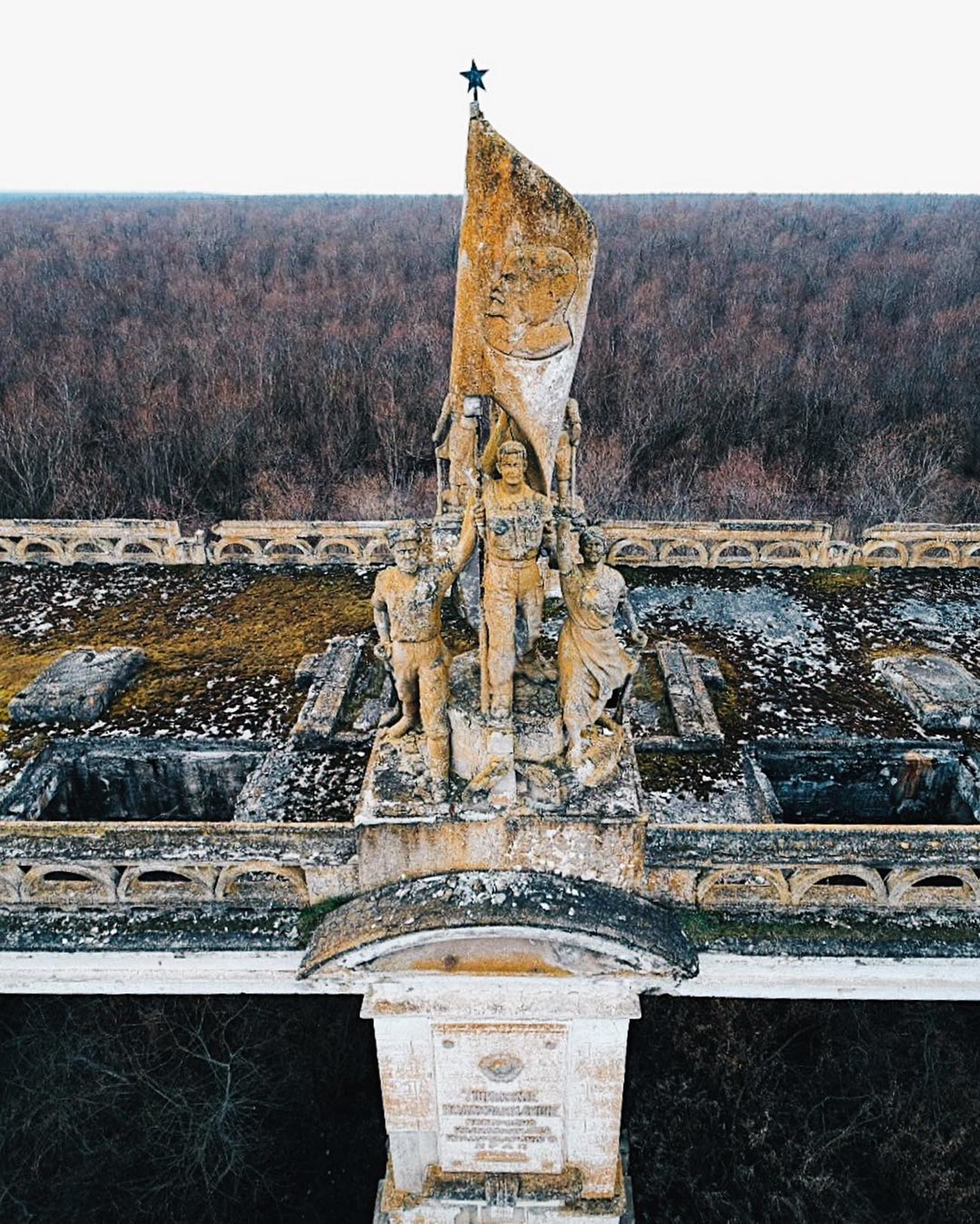50 EPIC abandoned places in Russia (PHOTOS)
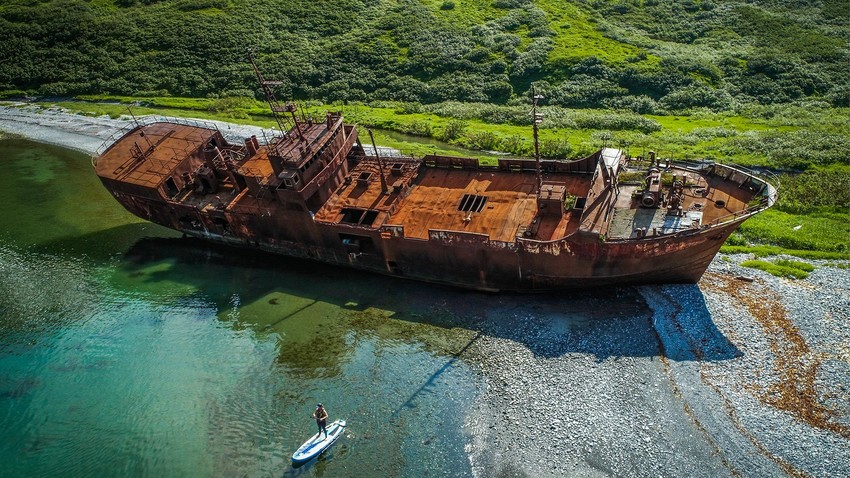
1. Lighthouse on Cape Aniva, Sakhalin
This old lighthouse in the middle of a raging ocean was built in 1939, when this southern part of Sakhalin belonged to Japan. The last people to work here left it in the early 1990s. The lighthouse is located in an inaccessible place, with frequent fogs and strong currents, and can only be reached by motor boat and in good weather.
2. Smirnykh airfield, Sakhalin
This airfield was built by the Japanese for the Imperial Army. Having become Russian, it was used by an Air Force regiment until 1994. When the airfield was closed, almost all the aircraft were transferred to another base, with the exception of two MiG-23MLs. They (or what is left of them) remain in the hangars still.
3. Schooner in Morzhovaya Bay, Kamchatka
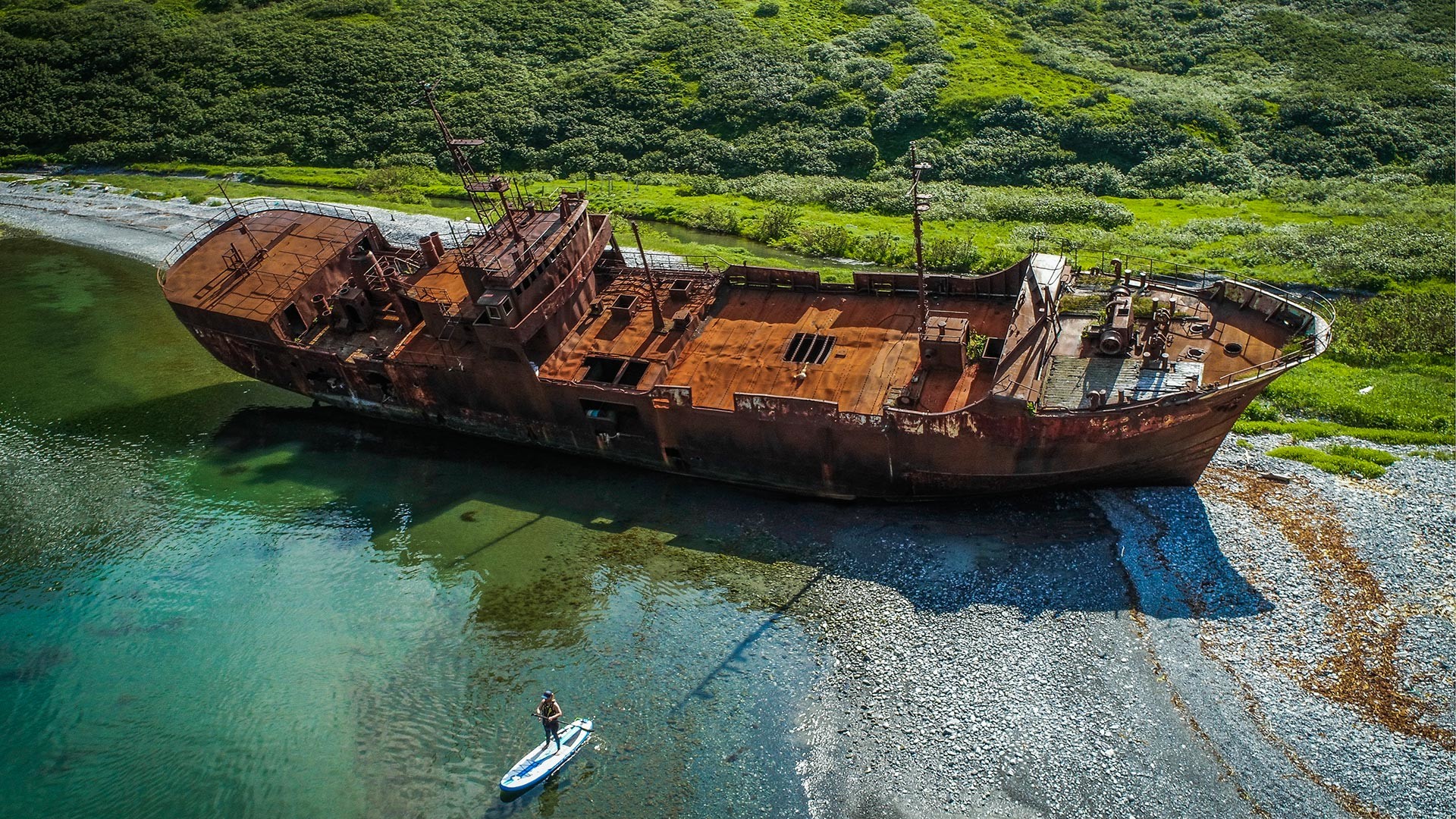
This whaling schooner, which was thrown ashore by a storm, was left to rust on a lonely coast. Many of the nearby villages have been abandoned, so there is no one to remove it.
4. Gunpowder room, Russky Island
Cellar No. 13 is the only cellar in a 1910 project, which had five tunnel storage facilities, up to 100 meters deep. It was used to store shells and fuses, some of which, according to industrial tourism enthusiasts, can still be found here.
5. Mir diamond mine, Yakutia
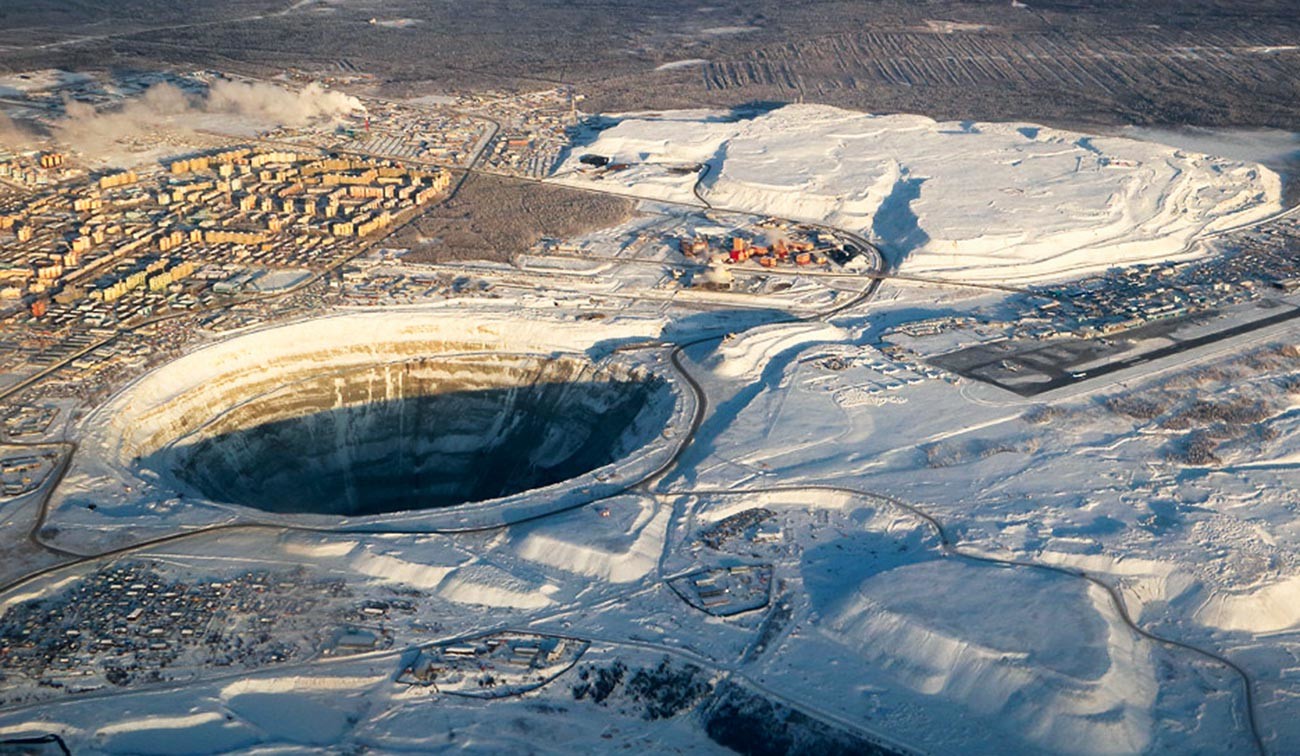
This former diamond mine is so huge that even helicopters are banned from flying over it as they may be dragged in by the draft. It is the second largest (after the Bingham Canyon Mine in Utah, U.S.) man-made hole in the world: 525 meters deep and 1,200 meters in diameter.
6. Mokry bridge, Chuvashia
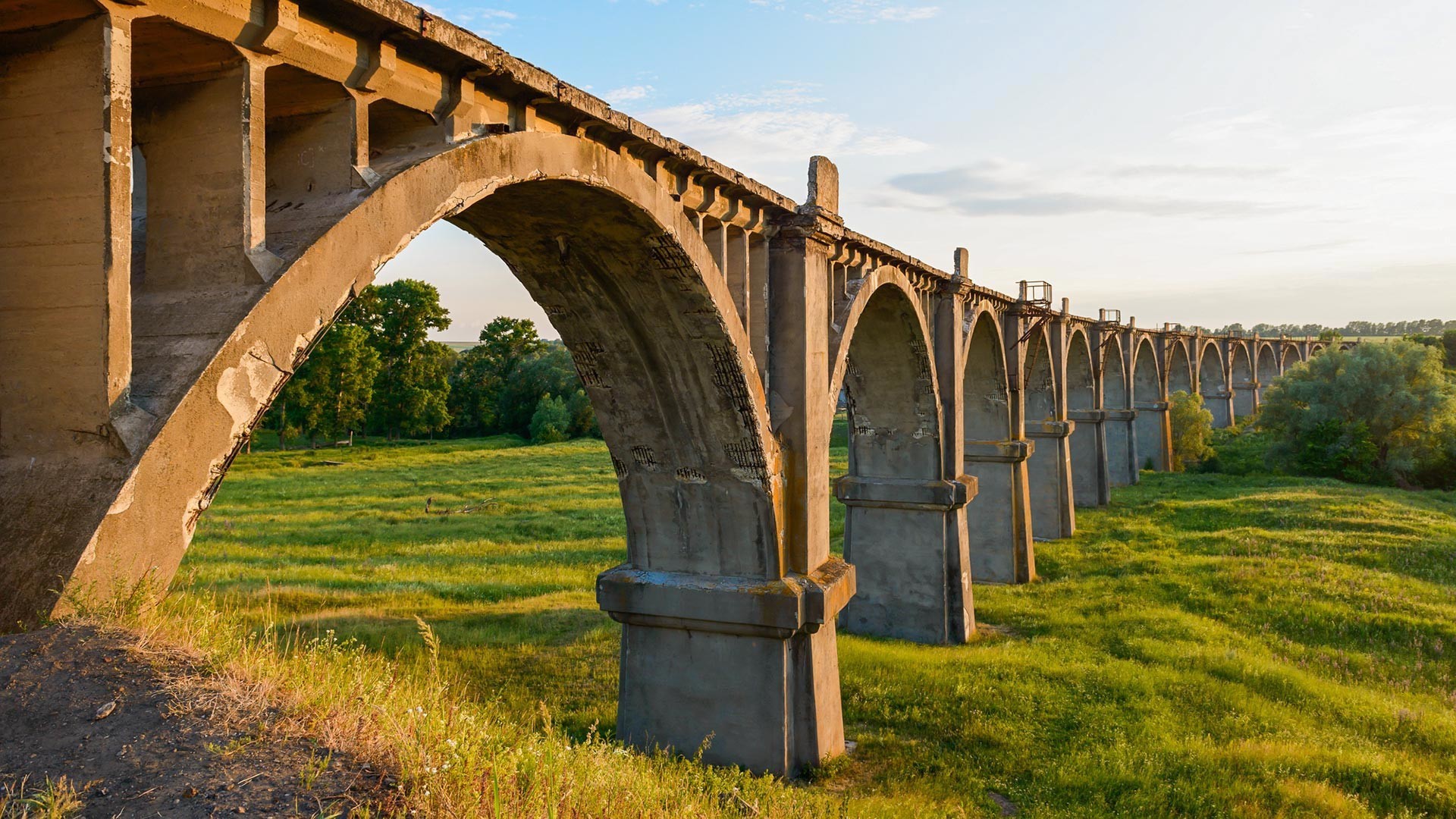
This spectacular viaduct in the village of Mokry is more than 100 years old. During World War II, the Germans were desperately looking for a bridge here, since it was used by echelons of ammunition convoys. They failed to find it and the bridge was “retired” only in 1986.
7. Church of St. Paraskeva Pyatnitsa, village of Russkoye Khodyashevo
This wooden church stands 33 km from Kazan, near the deserted village of Russkoye Khodyashevo. The last person from Khodyashevo left it in 2010.
8. Settlement of Kadykchan, Magadan Region
Kadykchan (translated from the Even language, meaning “Valley of Death”) was built by prisoners. These days, it is an abandoned mining “ghost town” with the creepiest Lenin monument of all. People left it after there was an explosion at a nearby mine and the heating was turned off. In 2012, only one elderly man lived in the settlement, which once had a population of 12,000 people.
9. Sever communications station, Magadan
The tropospheric station near Anadyr was closed for good in 2003. With the development of satellite communications, there was no longer any need to maintain such a massive facility.
10. Monument in the town of Satka, Chelyabinsk Region
Satka has a Hammer and Sickle monument sitting atop one of its hills. It was installed to mark the 50th anniversary of the establishment of the USSR, but apparently failed to be recorded in the register. And so it remains, an unaccounted for and unregistered monument of a bygone era.
11. Gamsutl, Dagestan
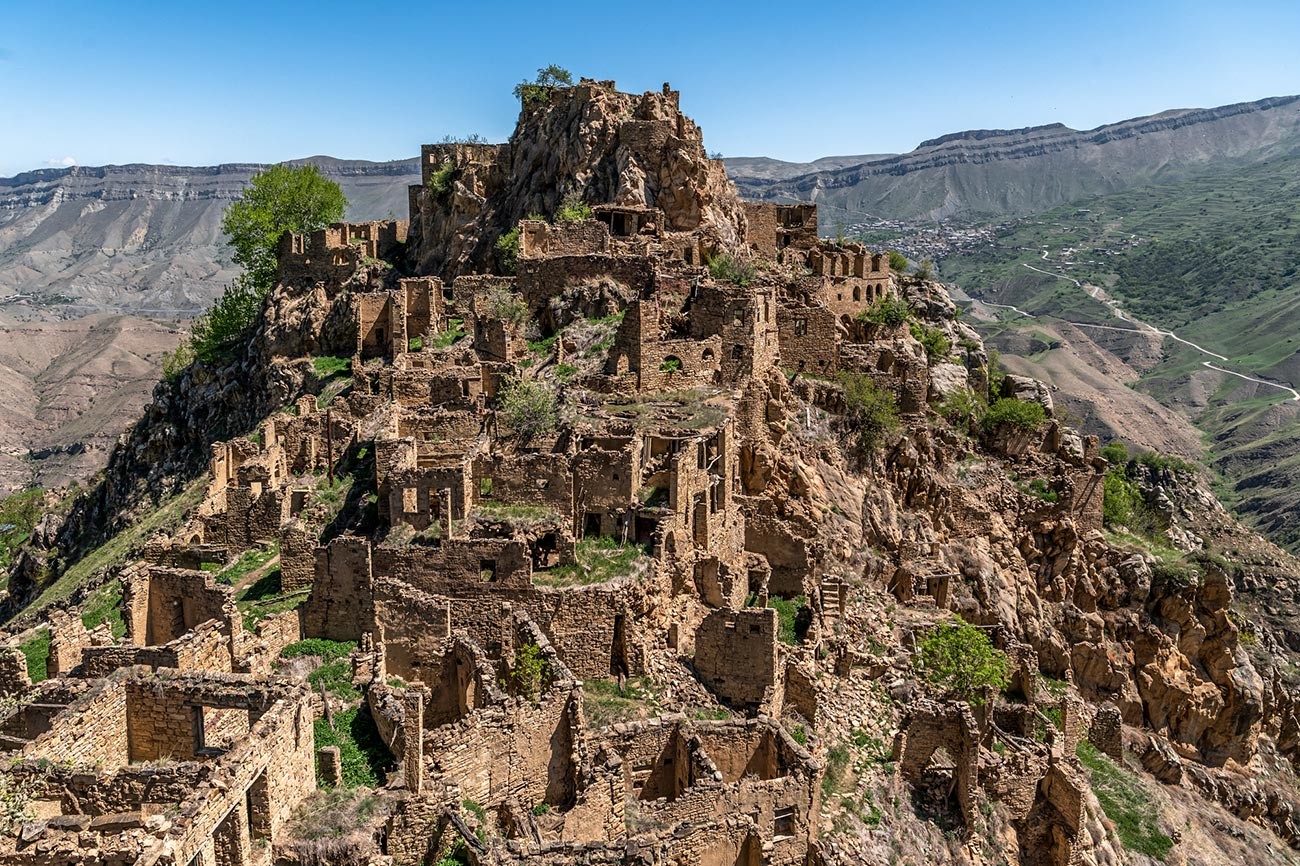
This is an abandoned ancient mountain village in the Republic of Dagestan in the North Caucasus. Its population was killed by a cholera outbreak in the 20th century.
12. Torpedo testing facility, Dagestan
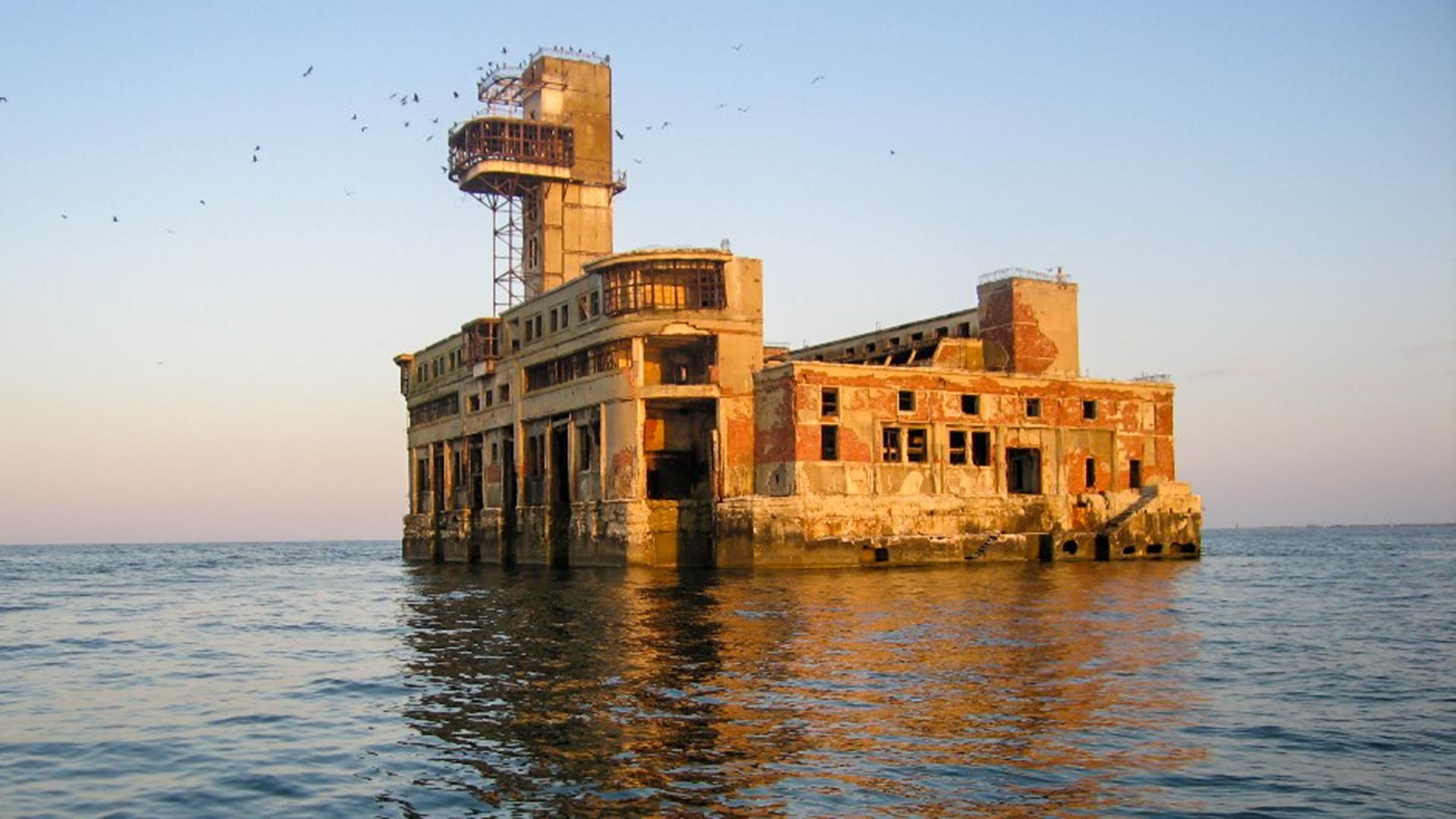
This Soviet avant-garde building is located in the Caspian Sea, 3 km from the shore. It has been abandoned since 1966, as it no longer meets the requirements for testing new-generation torpedoes.
13. Mudflow control dam, Kabardino-Balkaria
The country’s largest mudflow control dam was built in the town of Tyrnyauz on the slopes of the Central Caucasus mountains in 1999. That same year, it saved the 27,000-strong town from a powerful mudflow. However, no money to restore the dam was ever found.
14. Amanauz hotel, Karachay-Cherkessia
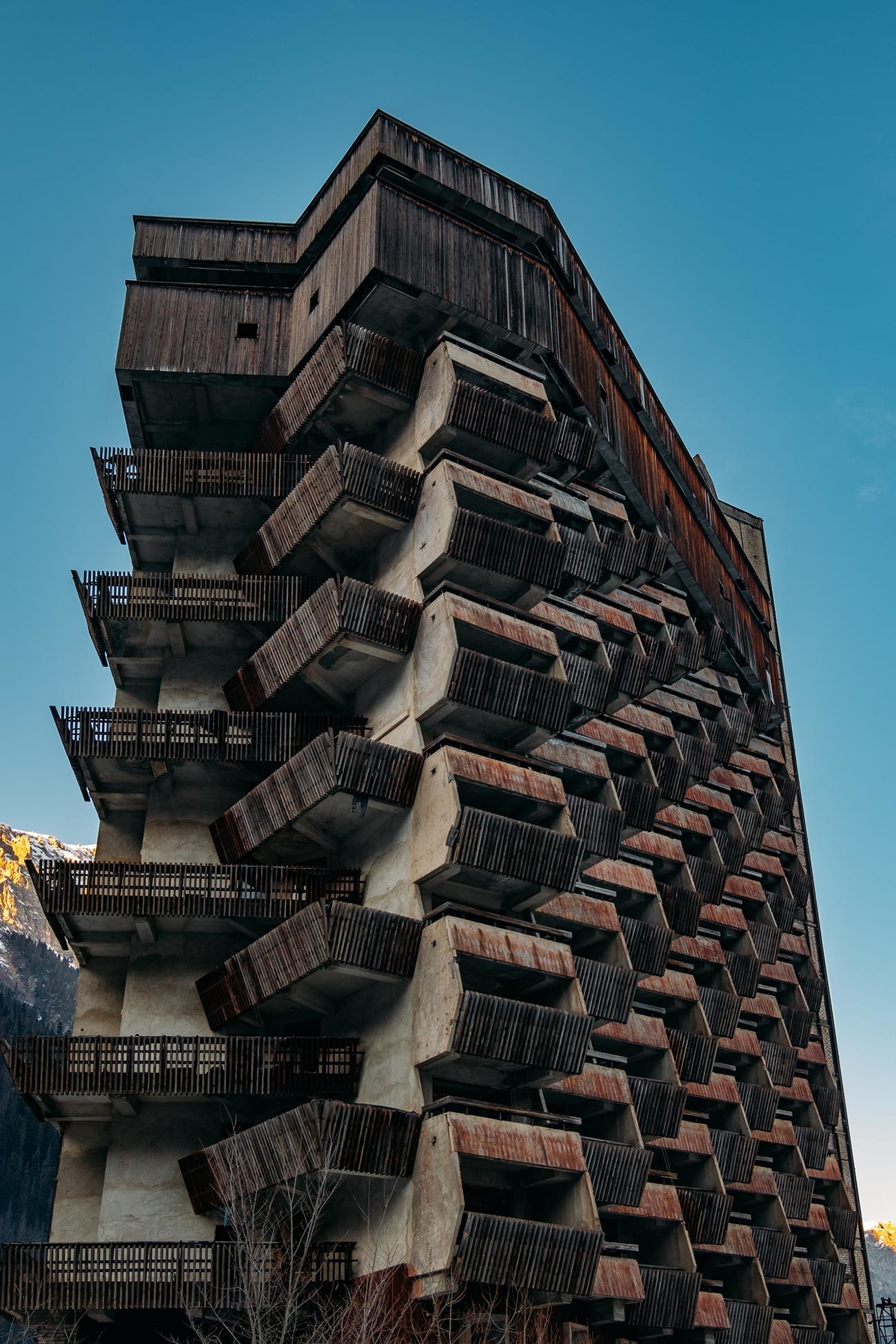
The famous unfinished construction project in the Dombay ski region was meant to become a resort hotel, but the almost finished project had to be scrapped, due to a crack in the foundation.
15. Lutheran church, Volgograd Region
This Lutheran church in the village of Grechikhino, which stands in a field, was consecrated in 1892. These days it is used as a grain storage. Which is why it has been relatively preserved.
16. Ship graveyard, Teriberka
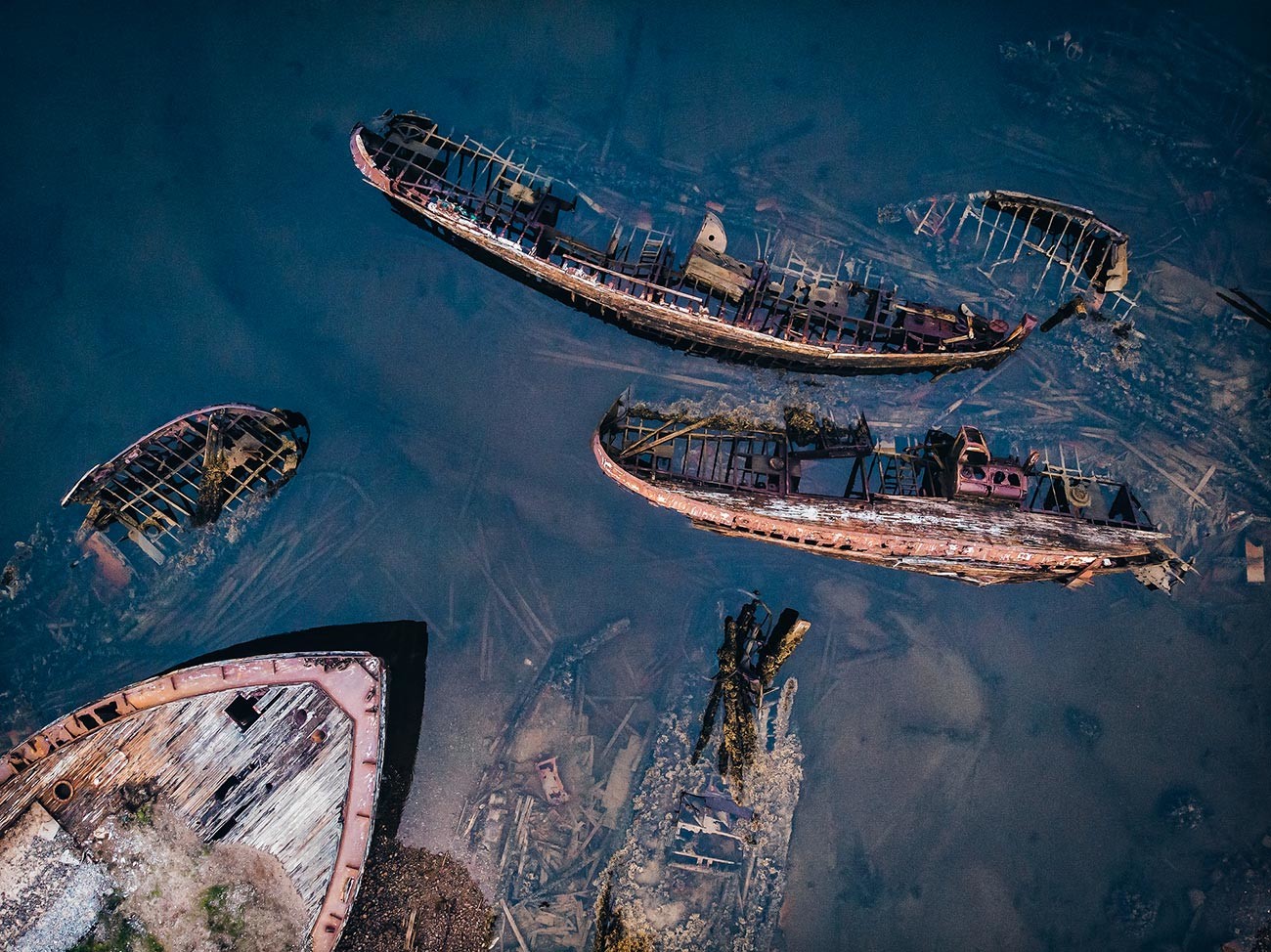
In 2014, this village located beyond the Arctic Circle became famous overnight: it had served as a film set for Andrey Zvyagintsev's internationally acclaimed movie ‘Leviathan’. One of the most atmospheric places in Teriberka - a graveyard of wooden ships – is also captured in the movie.
17. Kalyazin church, Tver Region
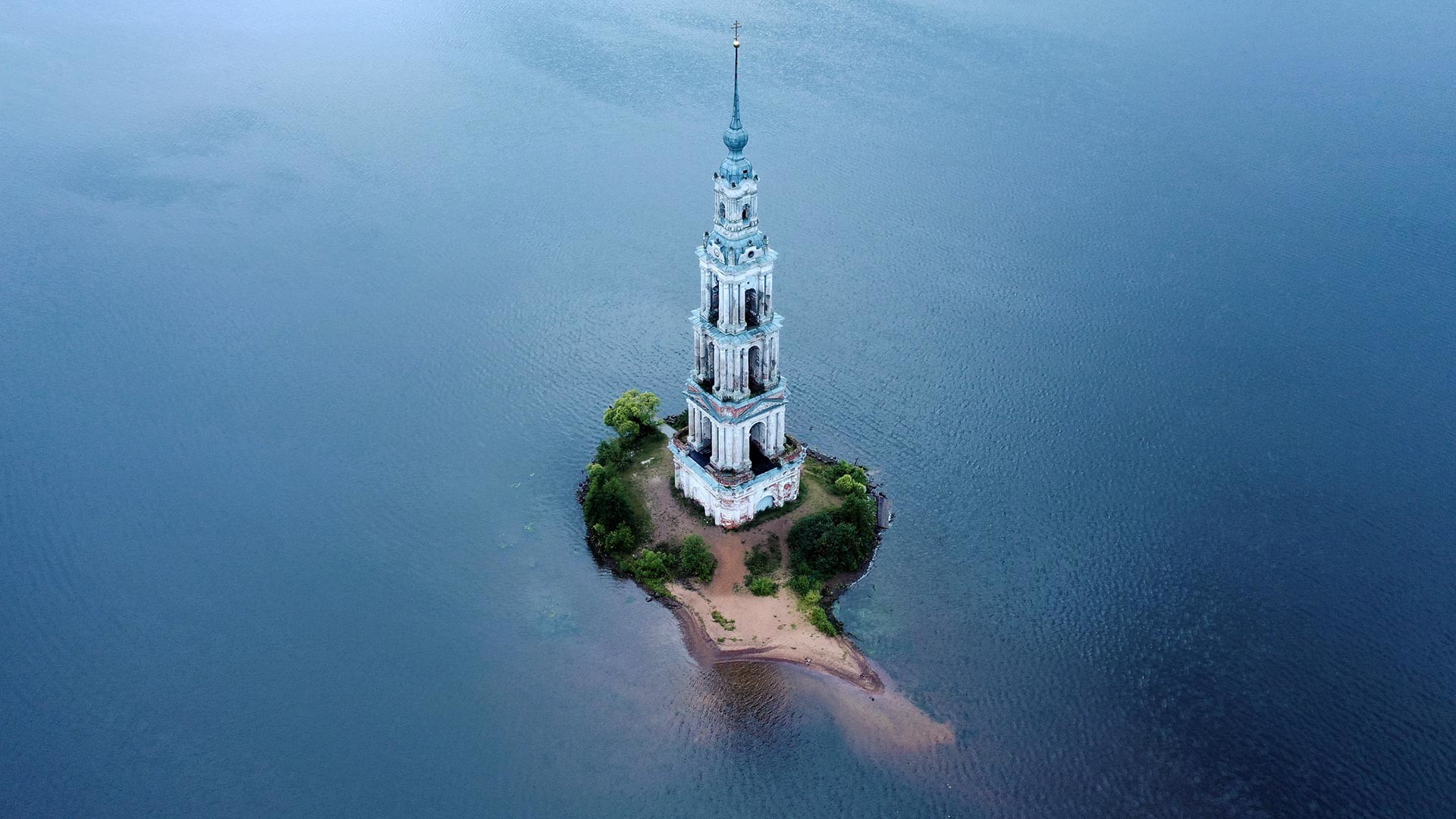
The flooded bell tower standing on an island in the Uglich reservoir 200 km north of Moscow was once part of the Kalyazin monastery, which was often visited by Russian tsars. Later, this entire area ended up under water when the reservoir was created. The only building that did not go under water completely was the bell tower, which was used as a lighthouse. Since 2014, due to falling water levels, it has been once again surrounded by land.
18. The von Geisler castle, Tver Region
The Gothic castle stands near a lake in the middle of a forest. A descendant of a Russified Dutch family, Vladimir Geisler, built it three years before the 1917 Bolshevik Revolution, after which he had to flee the country. In Soviet times, the building housed a sanatorium, which, however, failed to survive the Perestroika years.
19. Defense Ministry sanatorium, Tver Region
An example of Soviet modernism in all its glory: a cardiological sanatorium for 500 patients, whose construction was never completed.
20. Church of the Life-Giving Trinity, village of Turny
This church with a mini forest on its roof is located in Tver Region, in a village that is populated only in summer. Its history dates back to 1908. Now it stands empty, neither floor nor frescoes have survived, only a carved frame of the iconostasis.
21. Church of John the Evangelist, village of Koy
This church in Tver Region was built between 1828 and 1833. It is empty inside, there is no floor or doors, but the stunning frescoes on the dome of the church have survived.
22. Fort Emperor Alexander I, St. Petersburg
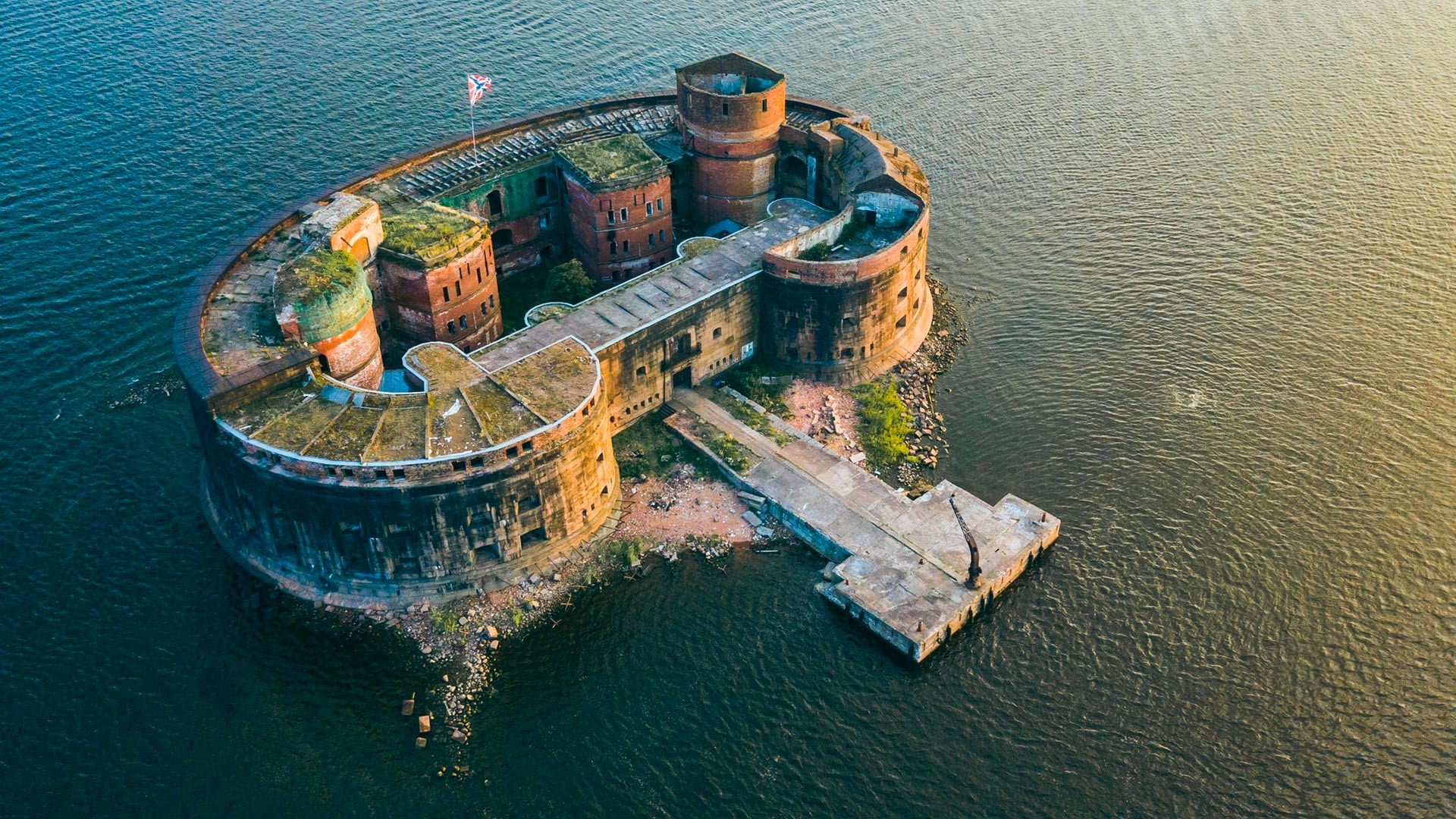
This defensive fortress in the Gulf of Finland never got to take part in any hostilities, so in the end, it was removed from the list of the city's defensive structures. But it was promptly assigned to a different use: in 1899, it became home to a laboratory for the study of plague.
23. The Demidov mansion, St. Petersburg
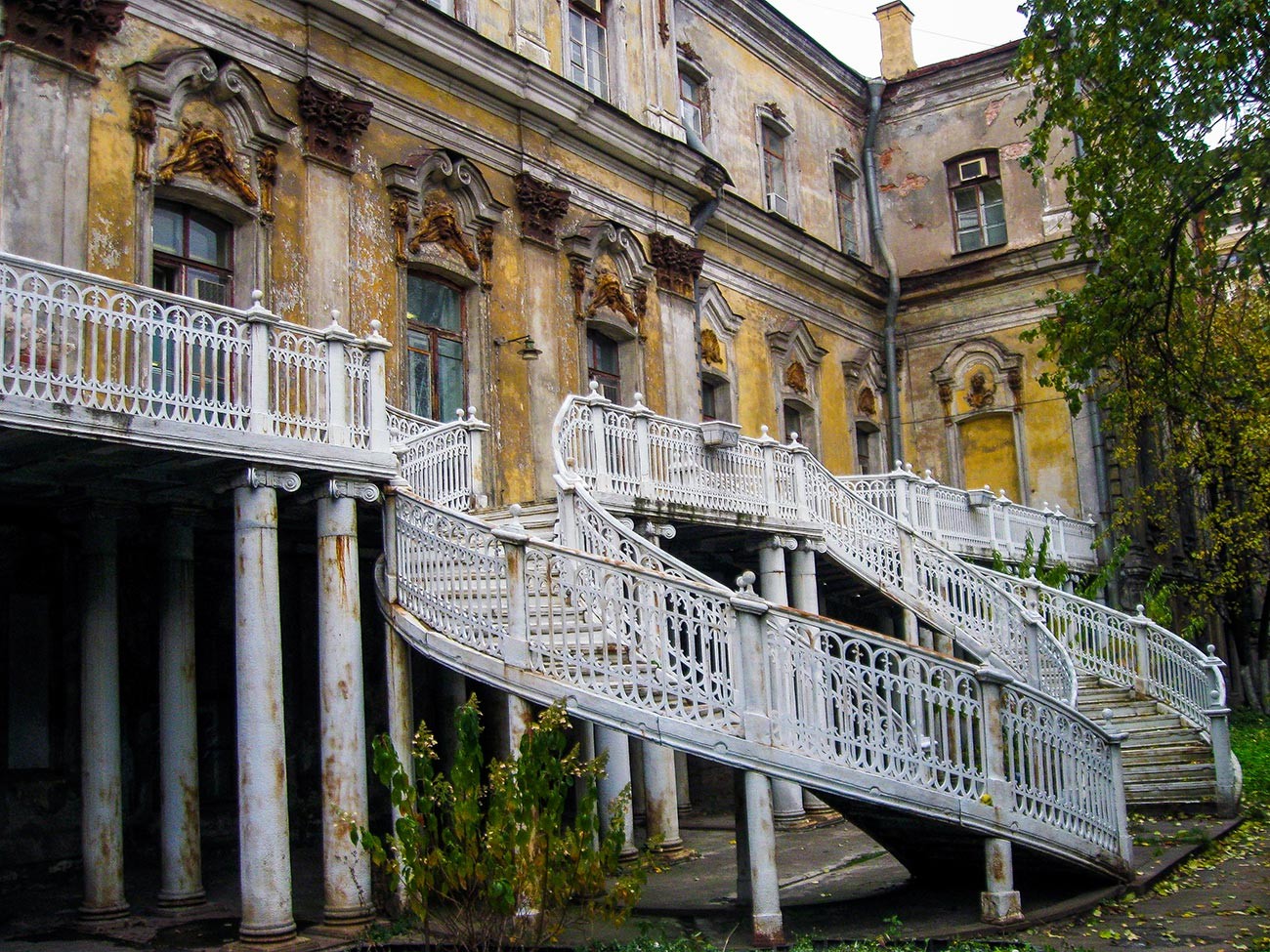
The old mansion of the once fabulously rich industrialists is located in the very center of St. Petersburg, in a lane next to St. Isaac’s Cathedral. It survived the 1917 revolution and for a while housed an engineering bureau. Now the building is owned by a commercial organization, but it remains abandoned.
24. The Brusnitsyn mansion, St. Petersburg
Peasant Nikolay Brusnitsyn, who moved to the city in 1844, quickly prospered, founded his own tannery and built a magnificent mansion next to it to serve as an almshouse. It housed old people and children, who were fed and clothed in exchange for working at the factory. These days, the abandoned mansion is a favorite setting for photo shoots by fashion magazines and for filming.
25. Red Cross shelter, St. Petersburg
Originally, the building housed a shelter for officers’ children and widows, under the patronage of the youngest daughter of Emperor Alexander III, Princess Olga Alexandrovna. Later, it became part of the Red Cross Society, but it ceased its operations in 1919.
26. Red Triangle factory, St. Petersburg
All the products of this rubber factory were branded with a logo in the form of a triangle, hence its unofficial nickname. This Russian-American manufactory is one of the oldest enterprises in the city. In the 2000s, the factory went bankrupt.
27. Grain elevator, Leningrad Region
The grain elevator of the SOK cooperative near Svetogorsk was built in the late 1930s. It used to produce everything: from flour to bread and compound feed for livestock. However, having failed to survive the post-Soviet economic crisis, the mill has stood abandoned since 1999.
28. Baltiyets pioneer camp, Leningrad Region
This is one of the numerous children’s summer camps that did not survive the collapse of the USSR. Today its 11 buildings located on a territory of 12 hectares look like a gloomy set for a horror movie.
29. Khovrino hospital, Moscow
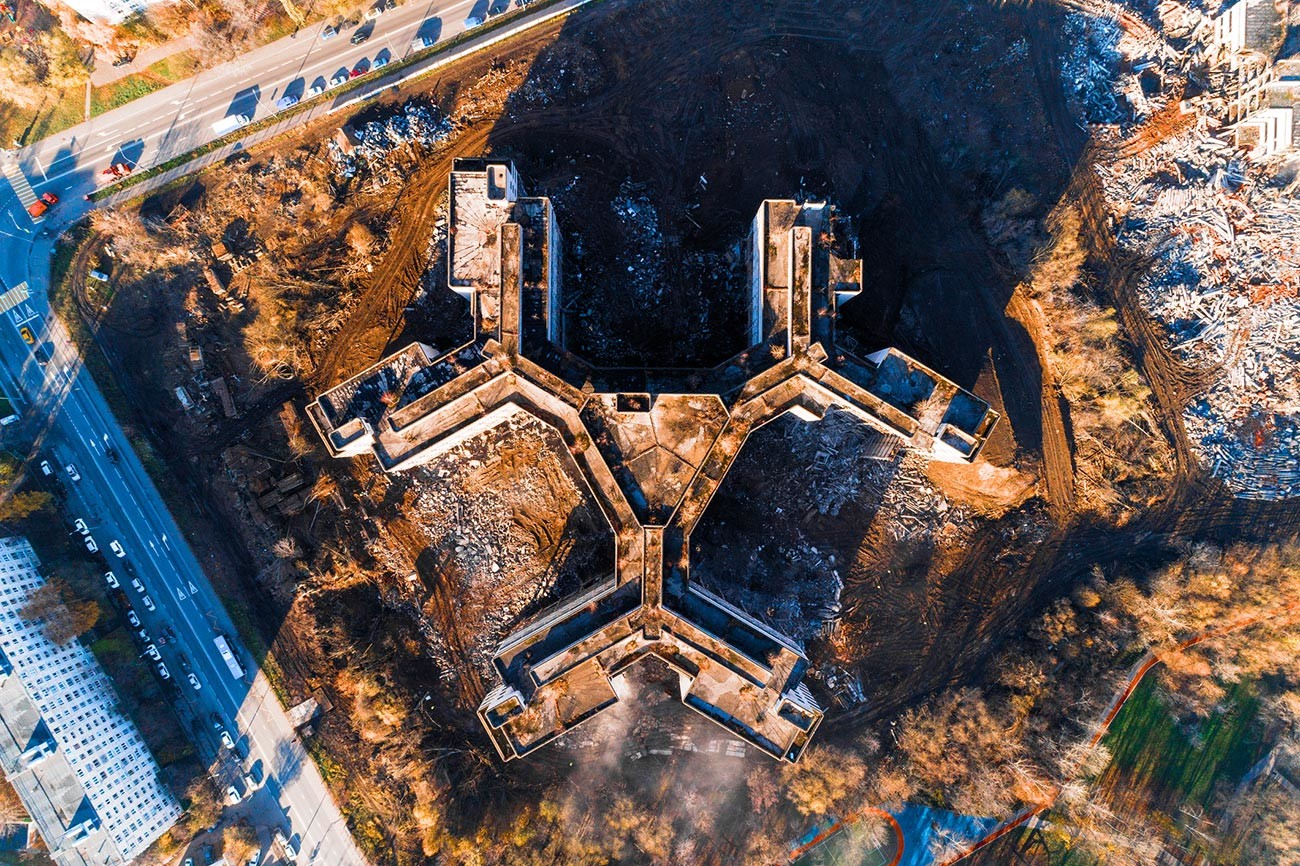
The construction of the hospital began in the 1980s, but was never completed. For more than 30 years, its gloomy concrete skeleton has attracted drug addicts and homeless people, as well as bloggers and film industry professionals.
30. Druzhba pioneer camp, Moscow Region
The camp is notable for its preserved artefacts: Soviet playgrounds and statues of pioneers covered with moss and mold.
31. Spheres outside Naro-Fominsk, Moscow Region
These spheres are none other than abandoned positions of S-25 and A-35 missile defense systems that used to guard Moscow. There are six spheres altogether, two of which are former radars.
32. Railway station in Gorki Leninskiye, Moscow Region
Gorki Leninskiye is famous as a place where Vladimir Lenin lived and died. Most of the facilities here are open to tourists. But there is, for example, a boarded-up railway station with a headless monument to Lenin. Those who manage to get inside it risk being detained by the police.
33. Test bench in Istra, Moscow Region
These structures, which look more like a set for a sci-fi movie, were designed for testing equipment and hardware for resistance to lightning. For example, a model of an airplane would be suspended above the ground and be subjected to an electrical impulse.
34. Skazka pioneer camp, Moscow Region
This pioneer camp was built under Soviet leader Leonid Brezhnev and could accommodate some 300 children at a time. This is what its canteen looks like now.
35. German's House, Moscow Region
This mansion in the town of Dolgoprudny outside Moscow is guarded by the police around the clock, but remains abandoned still. It is one of the main buildings of the Vinogradovo estate. Not so long ago, it turned 100 years old.
36. Nikolskaya Church, village of Likhachevo
This place has had a bad reputation since the 17th century. The densely populated village of Likhachevo suddenly began to die out for an unknown reason. A decision was taken to build a church here, which temporarily improved things. However, something happened to each of the churches built in this place and soon trouble returned. Nikolskaya Church is the last church to be built here. In 1937, it was shut down by the Bolsheviks, and the village was completely destroyed by the Germans during World War II.
37. Christ the Savior Cathedral, Sedelnitsy
One of the most impressive abandoned churches in Russia is located in Ivanovo Region. Its dome collapsed many years ago and it was gradually overgrown with grass. Now all this looks like an art installation.
38. Sovremennik cinema theater, Ivanovo
The cinema was built at the end of 1975, but has been abandoned for the last 10 years. From time to time, its ground floor is used as a makeshift market, selling jackets, coats, fur coats or honey.
39. Graveyard of Soviet vehicles, Tula Region
This is the so-called museum of Mikhail Krasinets, who has all his life collected Soviet cars in the village of Chernousovo. However, he is unable to maintain them in good condition and refuses to sell collectible cars, so his museum in the field has gradually turned into a vehicle graveyard.
40. The Von Meck estate, village of Khruslovka
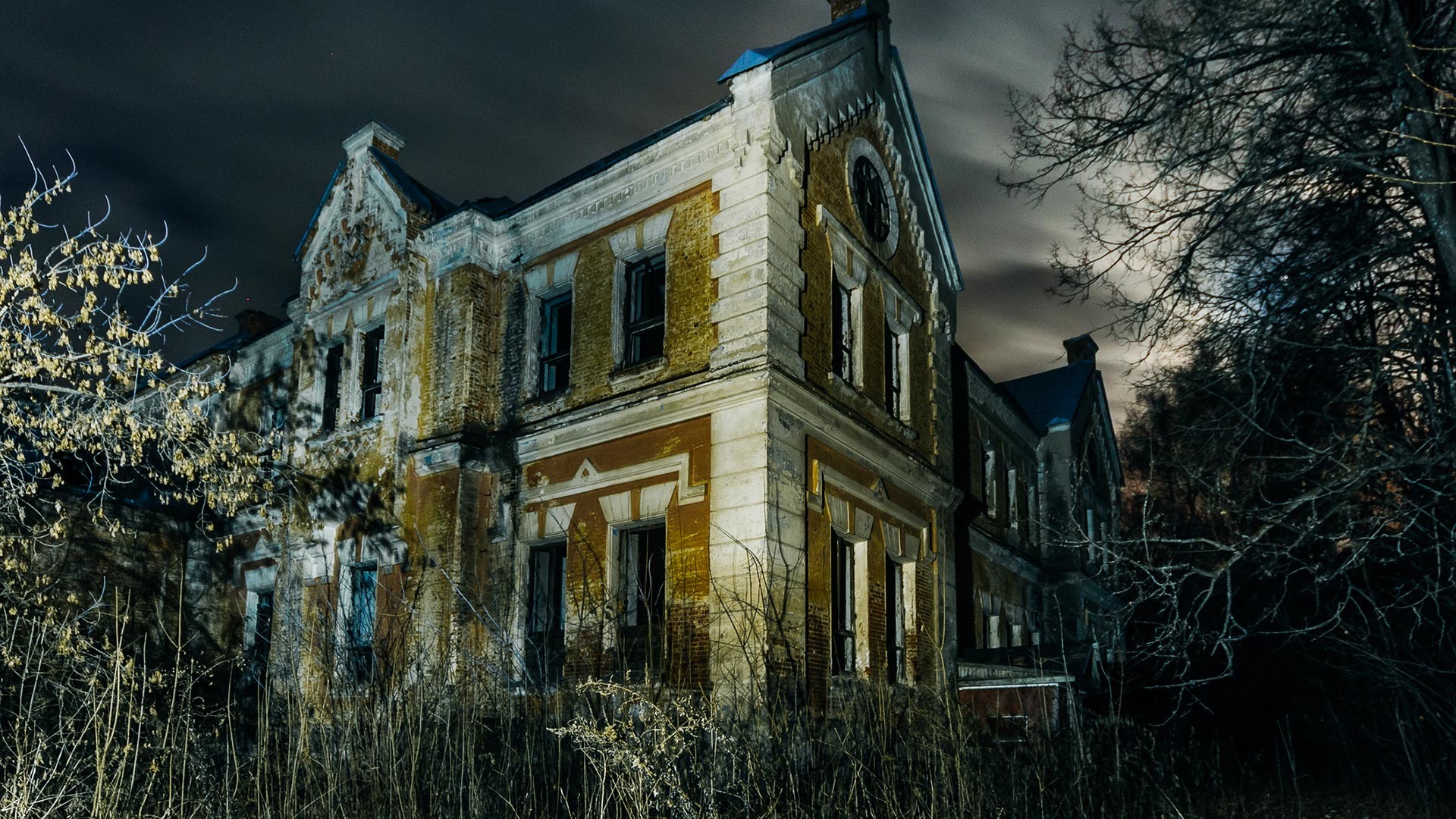
Its first owner was Baron Maximilian von Meck, the son of ‘the railway king’ Karl Otto Georg von Meck. After nationalization in 1918, all his property was handed over to the Museum of Everyday Life of Russian Nobility in Moscow, whereas the estate was used for growing beets and breeding livestock. After that, and until the 1980s, there was an orphanage there.
41. Village graveyard, Yaroslavl Region
Previously, an Assumption Convent was located here. After its abolition, a church was built in its place and a village graveyard formed around it. Now this place is abandoned.
42. Hospital, Rybinsk
This hospital for barge haulers in the neo-Russian style was built in the city of Rybinsk in 1880. Its wooden ensemble also included several more buildings, a medical assistant’s house and a chapel. In 1993, the whole complex received the status of a cultural heritage site, but no funds have been allocated for its restoration.
43. St. Mary’s Church, Saratov Region
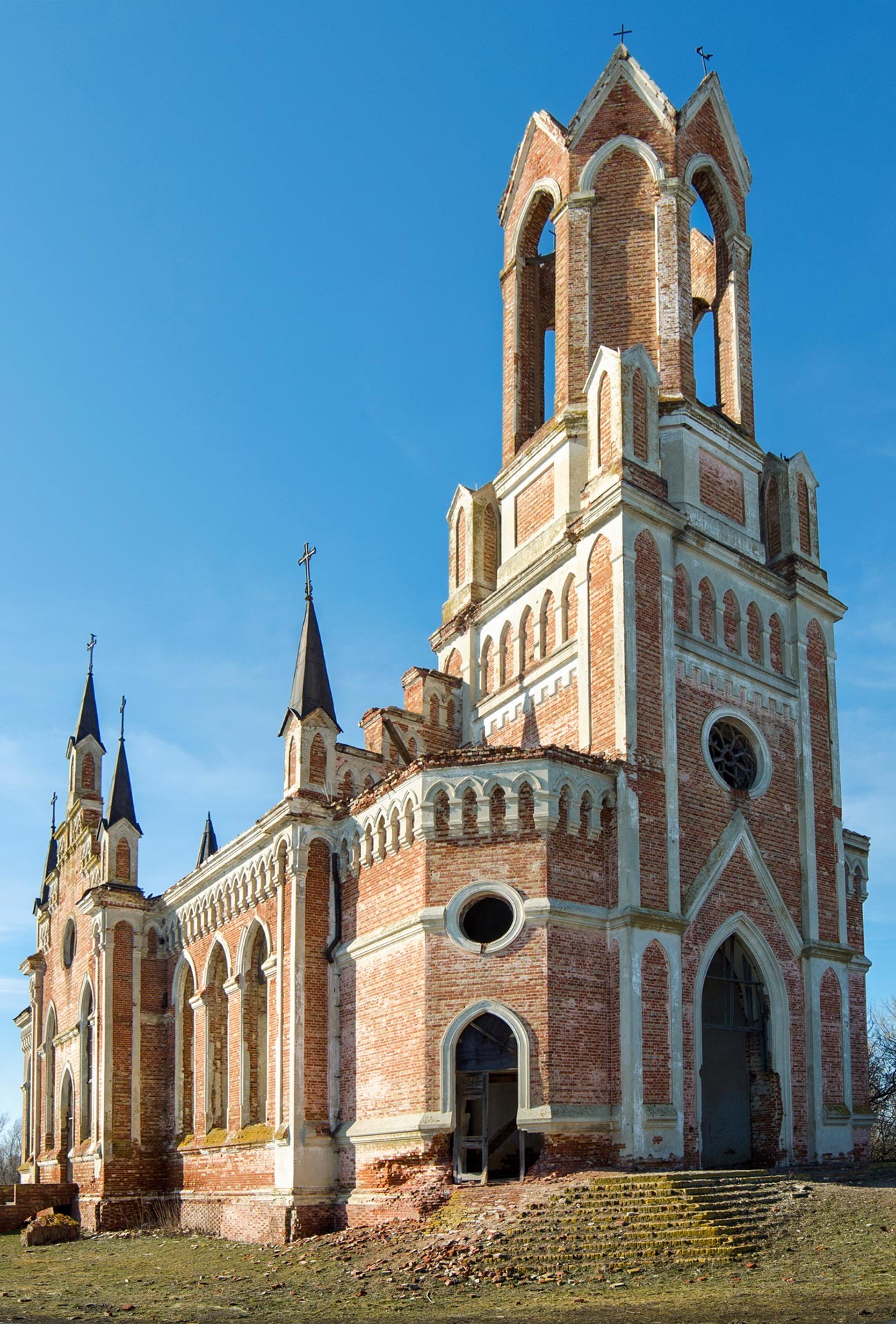
Only a frame remains of this Roman Catholic church, which is over 100 years old. In Soviet times, the church was used as a warehouse for a tractor station, and in 2004, its domes and roof were destroyed in a fire.
44. The Khrapovitsky estate, Vladimir Region
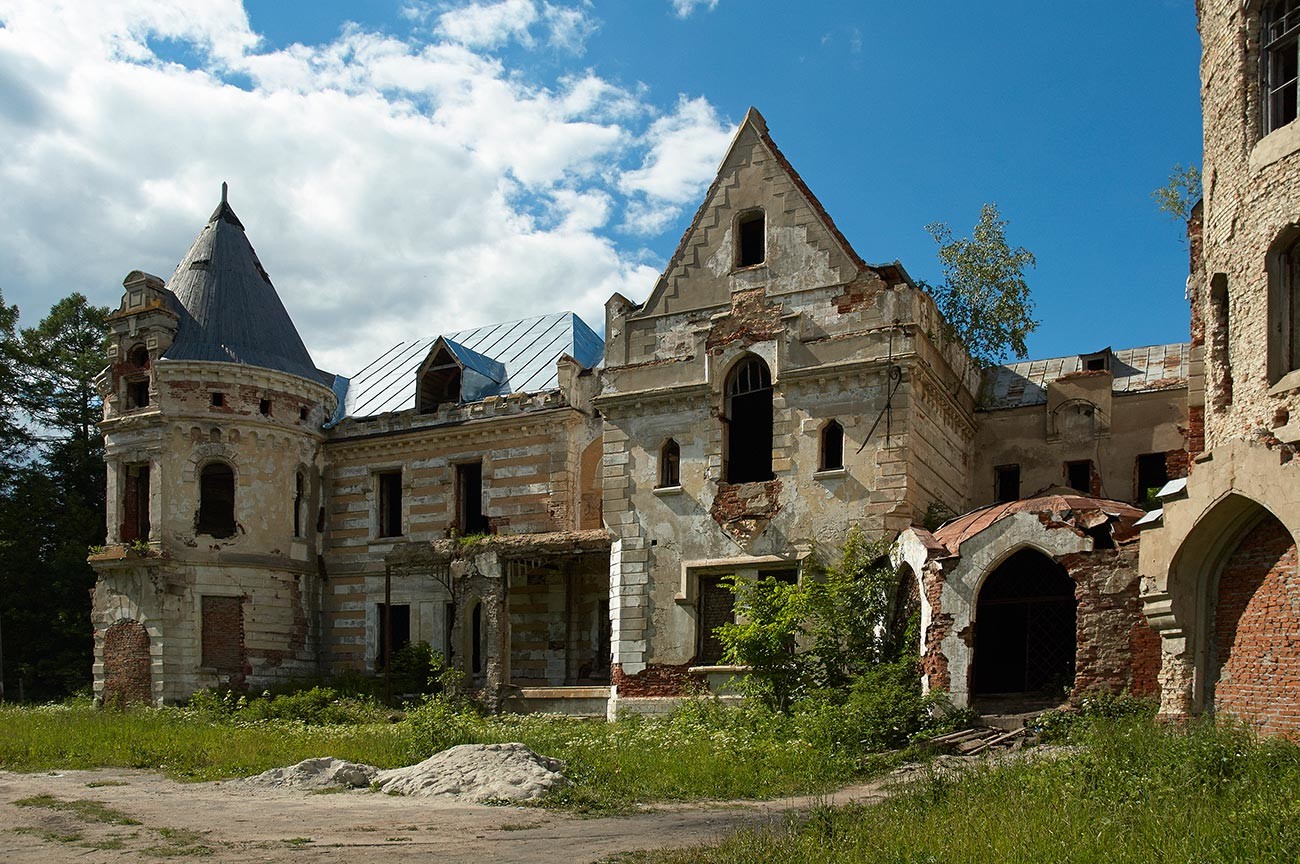
This ruined estate in the village of Muromtsevo was once an example of European architecture and interiors, with marble fireplaces and “French gardens”. Its owner did not spare any money, inviting foreign experts to work on the manor house and its gardens. After the Bolshevik Revolution, the estate was voluntarily handed over to the state.
45. Port cranes, Dudinka
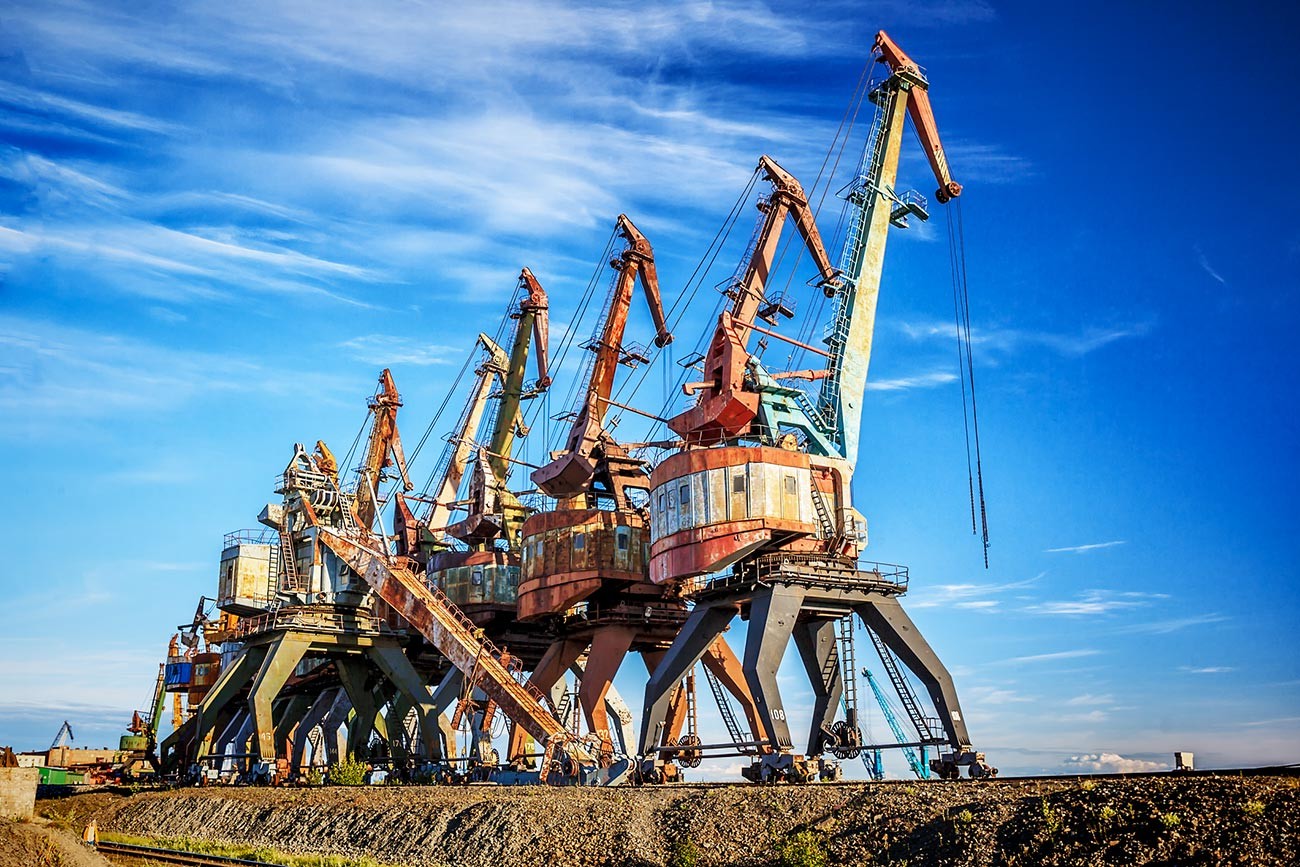
The capital of Taymyr is an outpost in the Russian Arctic and the Northern Sea Route and rusty port cranes are a familiar part of its landscape. There are new and modern cranes standing nearby, but no one is removing the old ones.
46. Pashkov’s manor, village of Vetoshkino
The manor house, which was burned down by marauders in Soviet times, had about 150 rooms and a large ballroom. Legend has it that the noble Pashkov family ordered that bricks for the construction of the manor house be taken from a monastery that had been dismantled for the purpose and that the hegumen of the monastery cursed the estate for this.
47. Tshchik reservoir, Krasnodar Territory
The abandoned spillway of the former Tshchik reservoir is located on a flooded island, which is difficult to reach without the locals’ help. It fell in disuse after the construction in 1975 of the Krasnodar reservoir.
48. House of Soviets, Kaliningrad
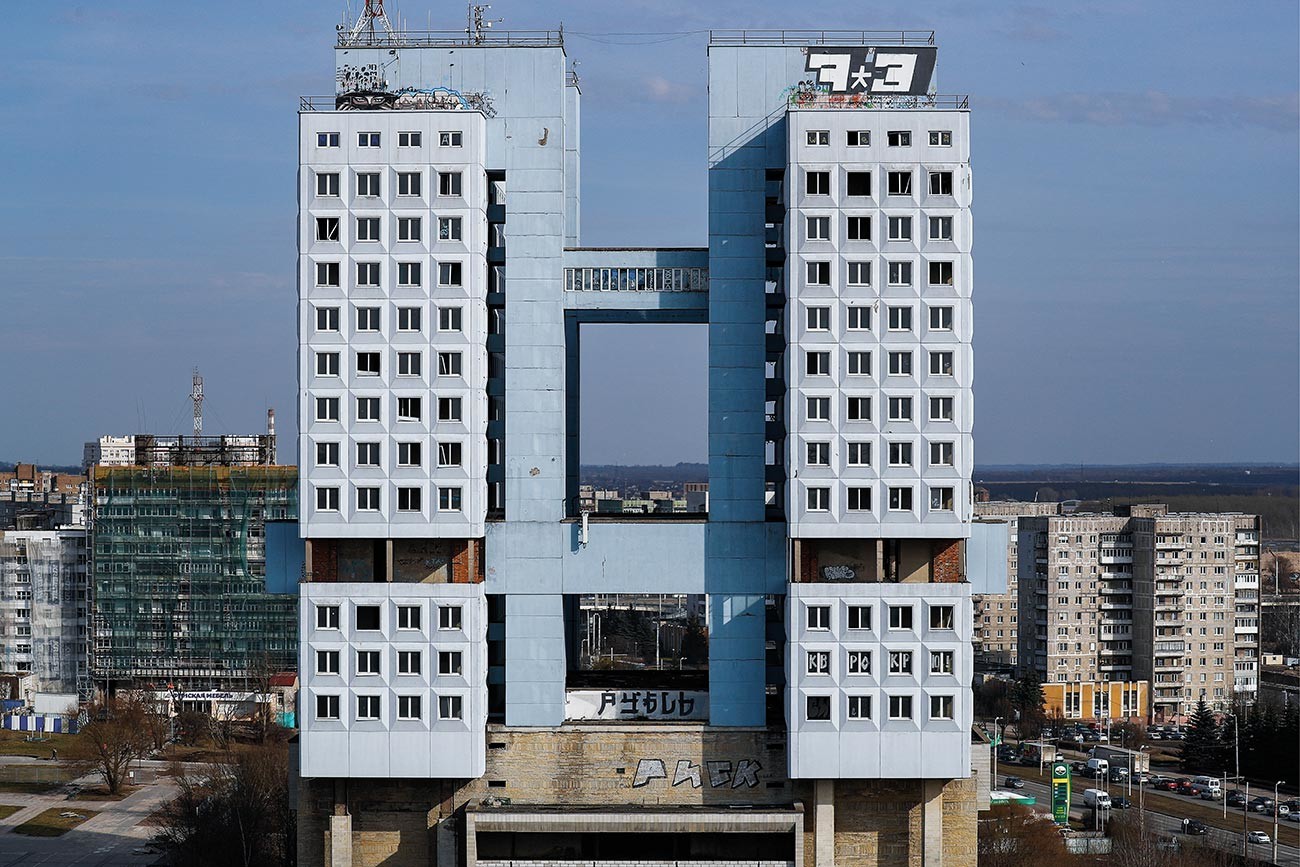
The highest abandoned building in Kaliningrad stands near the ruins of the Königsberg Castle, whose walls were demolished by order of the Soviet government after the occupation of the once German city. The House of Soviets in the city center was supposed to become another symbol of the new authorities, but the project was frozen after Perestroika, when it was 95-percent completed.
49. Ship graveyard, Kaliningrad Region
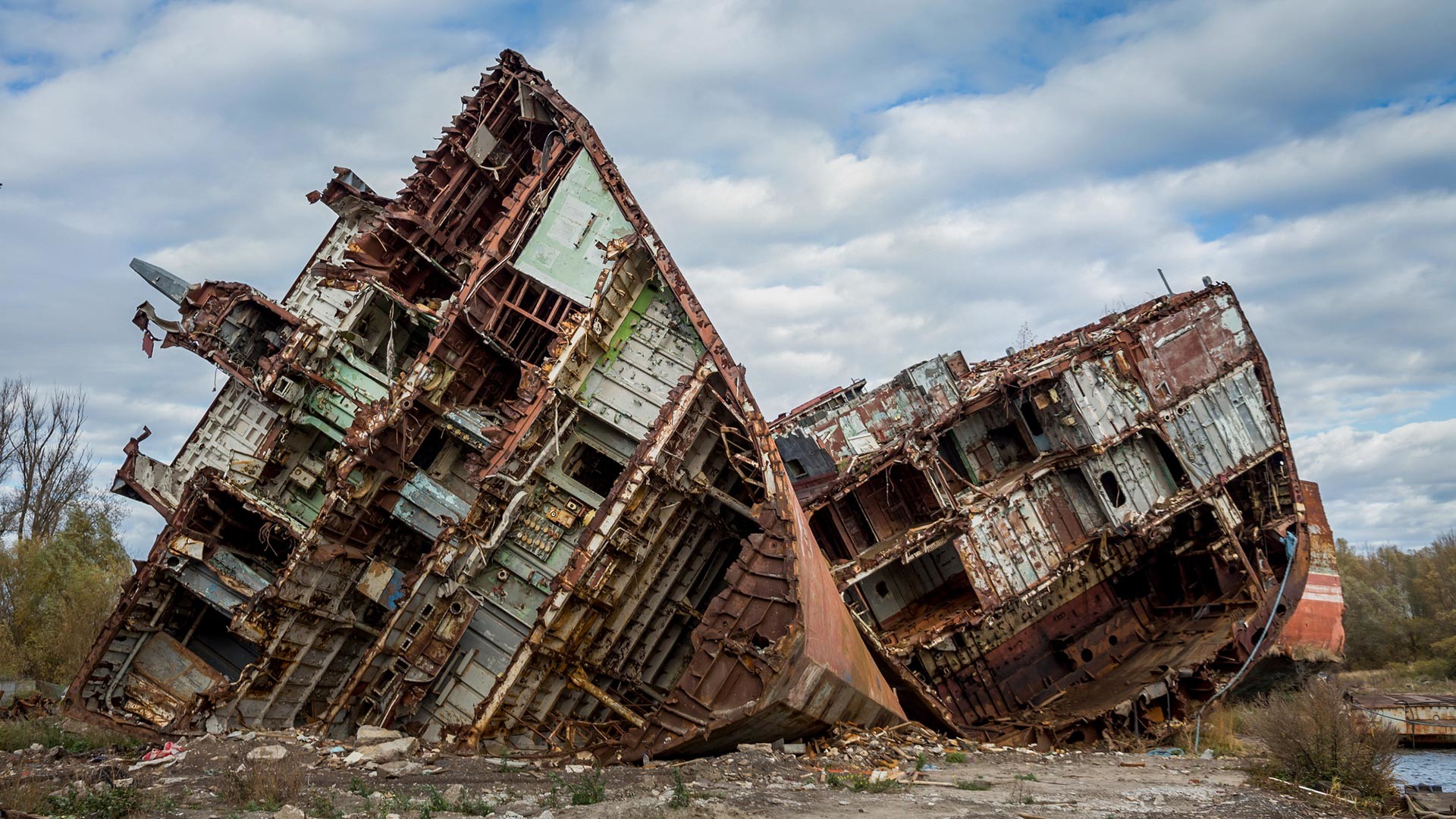
On one of the military docks in Baltiysk, the once restricted-access military base of the Baltic Fleet, there lies the Neukrotimy warship, sawn into many pieces. It was damaged during a naval parade in St. Petersburg in 2008, after which it was towed here.
50. Zapadny Fort, Baltyisk
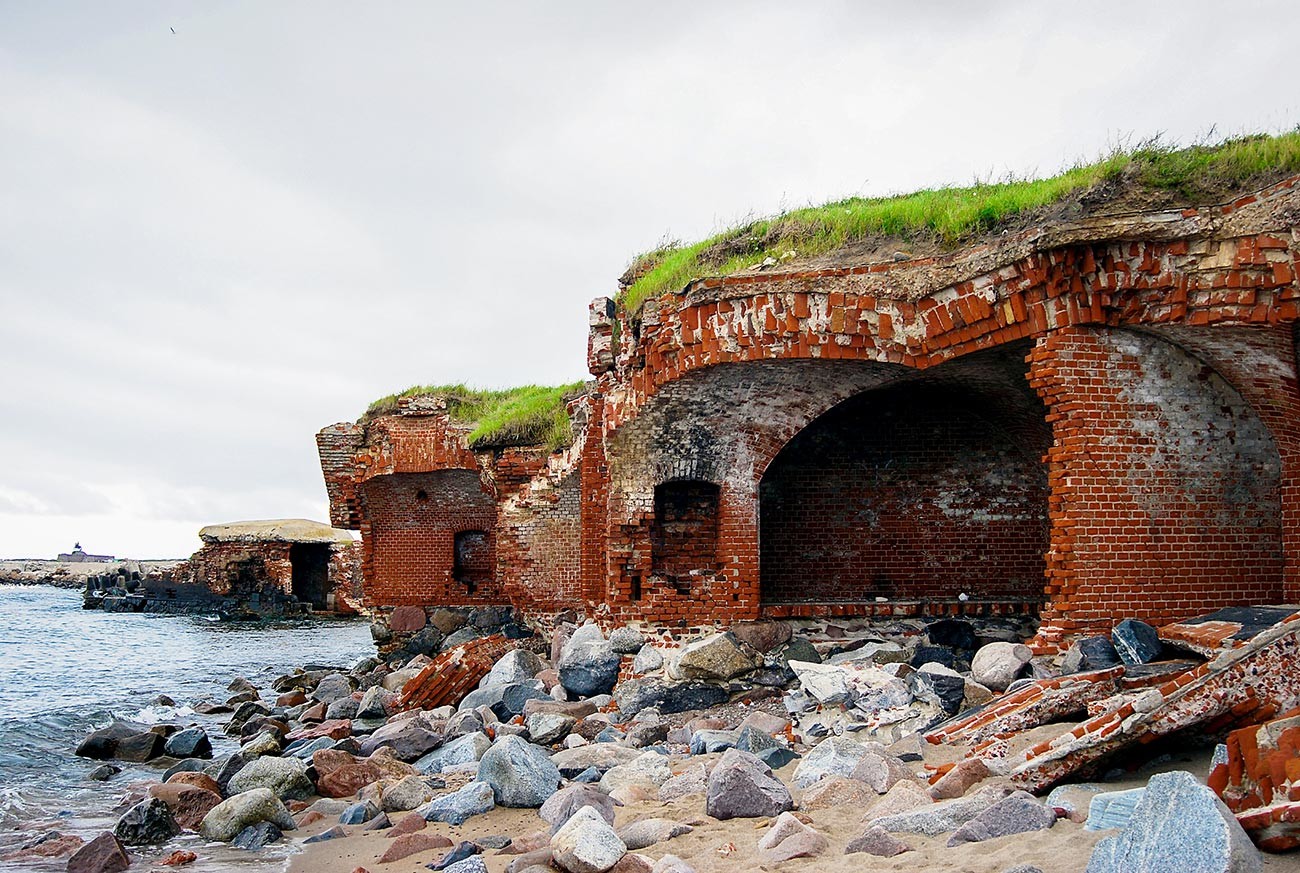
The fort in the form of an irregular pentagon was built on the Vistula Spit in the middle of the 19th century and was supposed to protect the entrance to the ship channel. In 1945, it was the scene of fierce fighting between Soviet and German troops. These days, the fort is waging an unequal battle against the sea and is rapidly crumbling.
If using any of Russia Beyond's content, partly or in full, always provide an active hyperlink to the original material.
Subscribe
to our newsletter!
Get the week's best stories straight to your inbox


